Models of Conflict
Lecture 6 part A, Political Economics I
OSIPP, Osaka University
24 November, 2017
Masa Kudamatsu
Motivations
Civil conflicts are widespread across the world
Experienced by 56% of the countries since 1960
Defined as conflicts with 25+ deaths per year
Last more than 10 years for 20% of the countries
Why do people wage a costly war?
Three major modelling approaches
to analyze conflict
Contest Model
Asymmetric information
Lack of commitment
1
2
3
Contest Model
Originally proposed as a model of lobbying
by Tullock (1980), reprinted in Lockard and Tullock (2001)
For a theoretical survey, see Garfinkel and Skaperdas (2006)
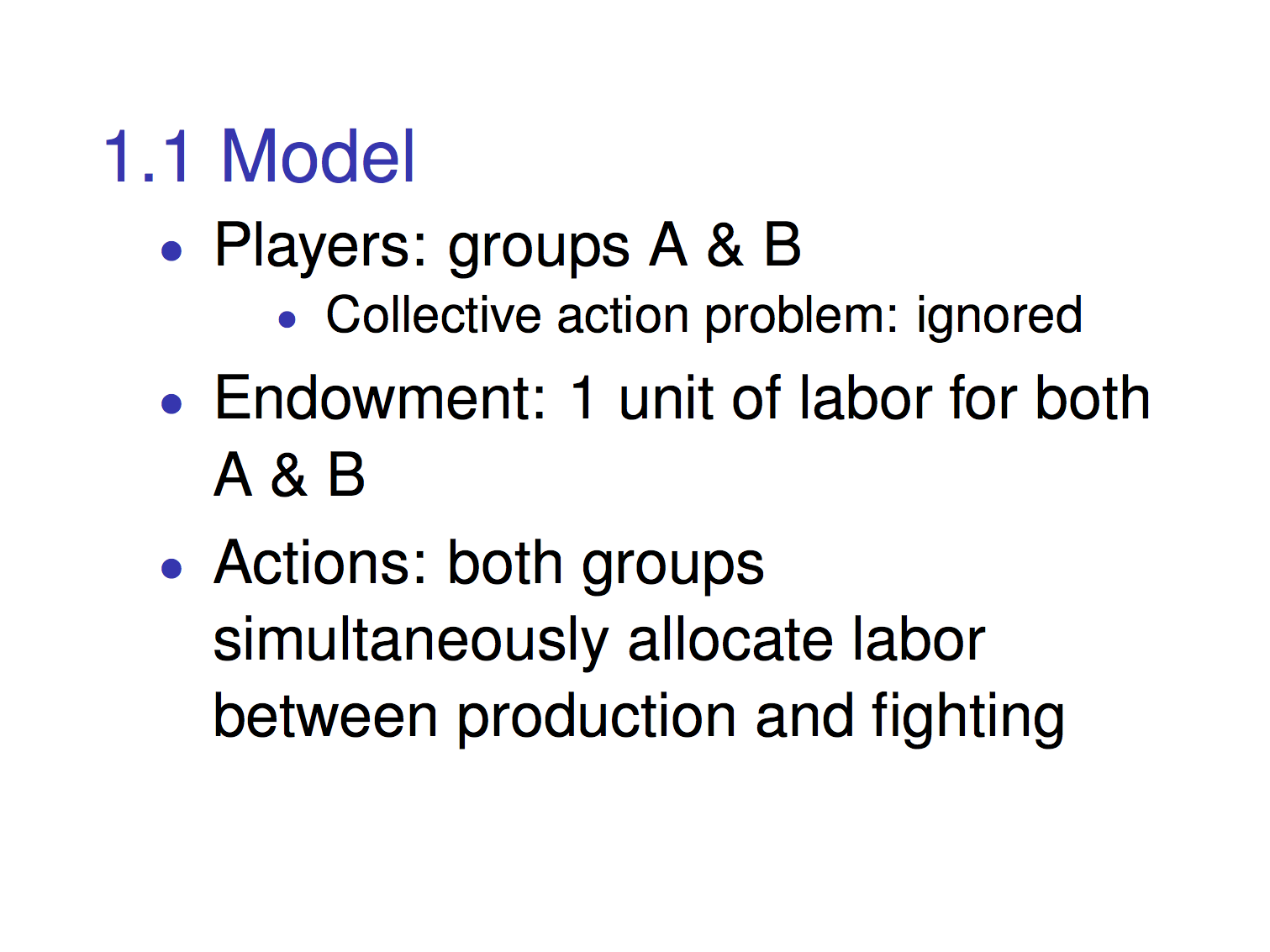
Model
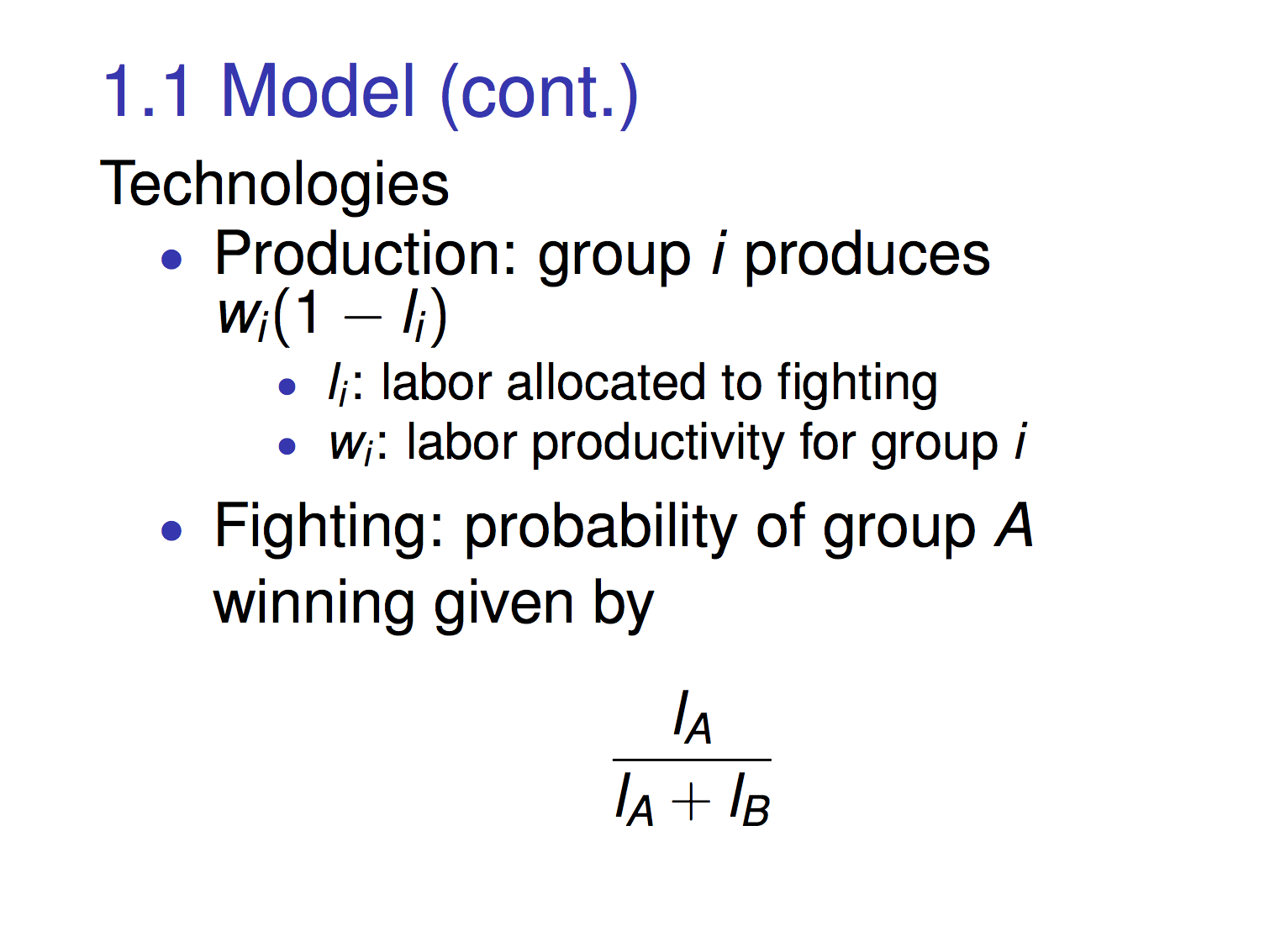
Model (cont.)
(Known as "contest success function")
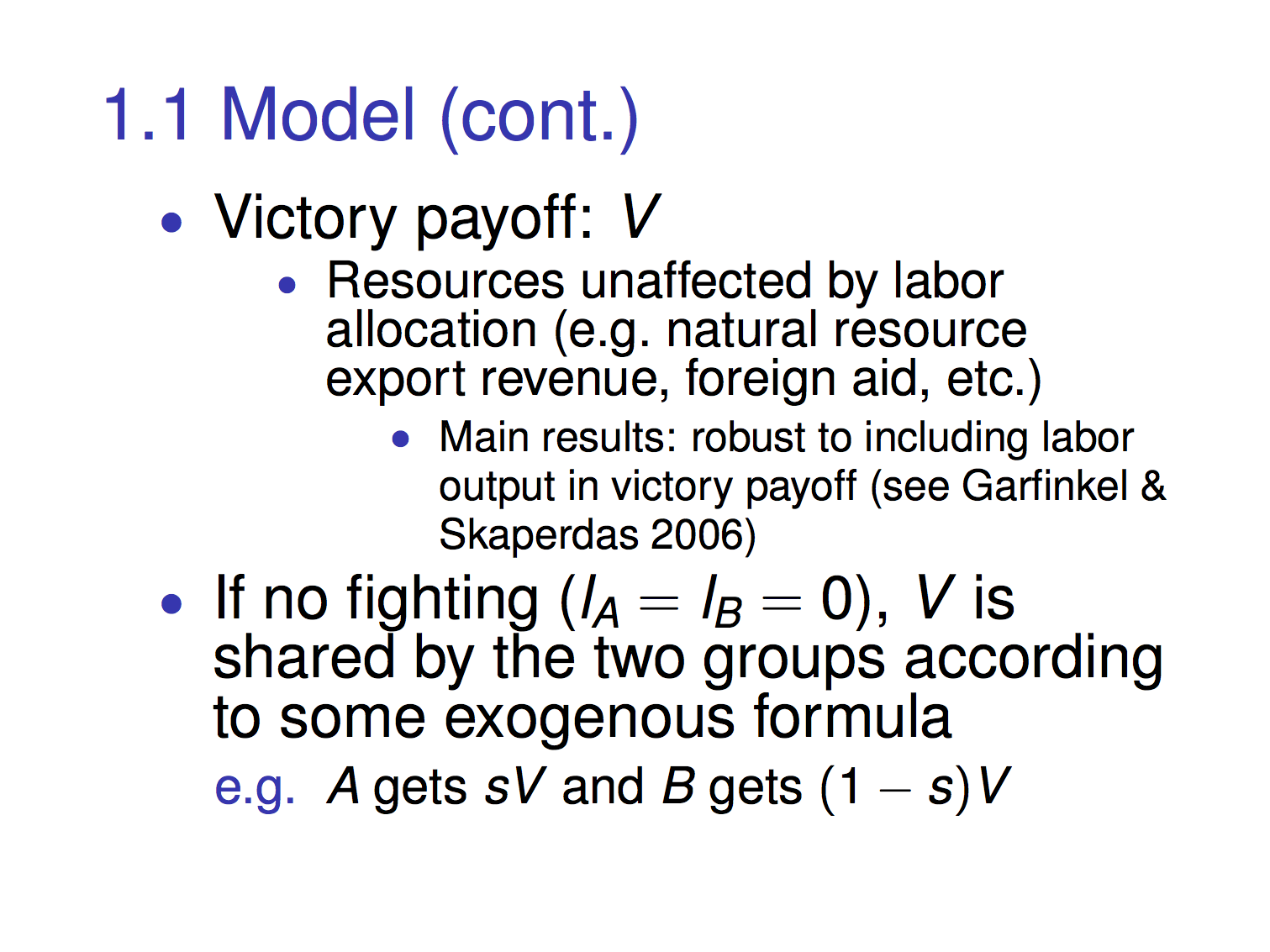
Model (cont.)
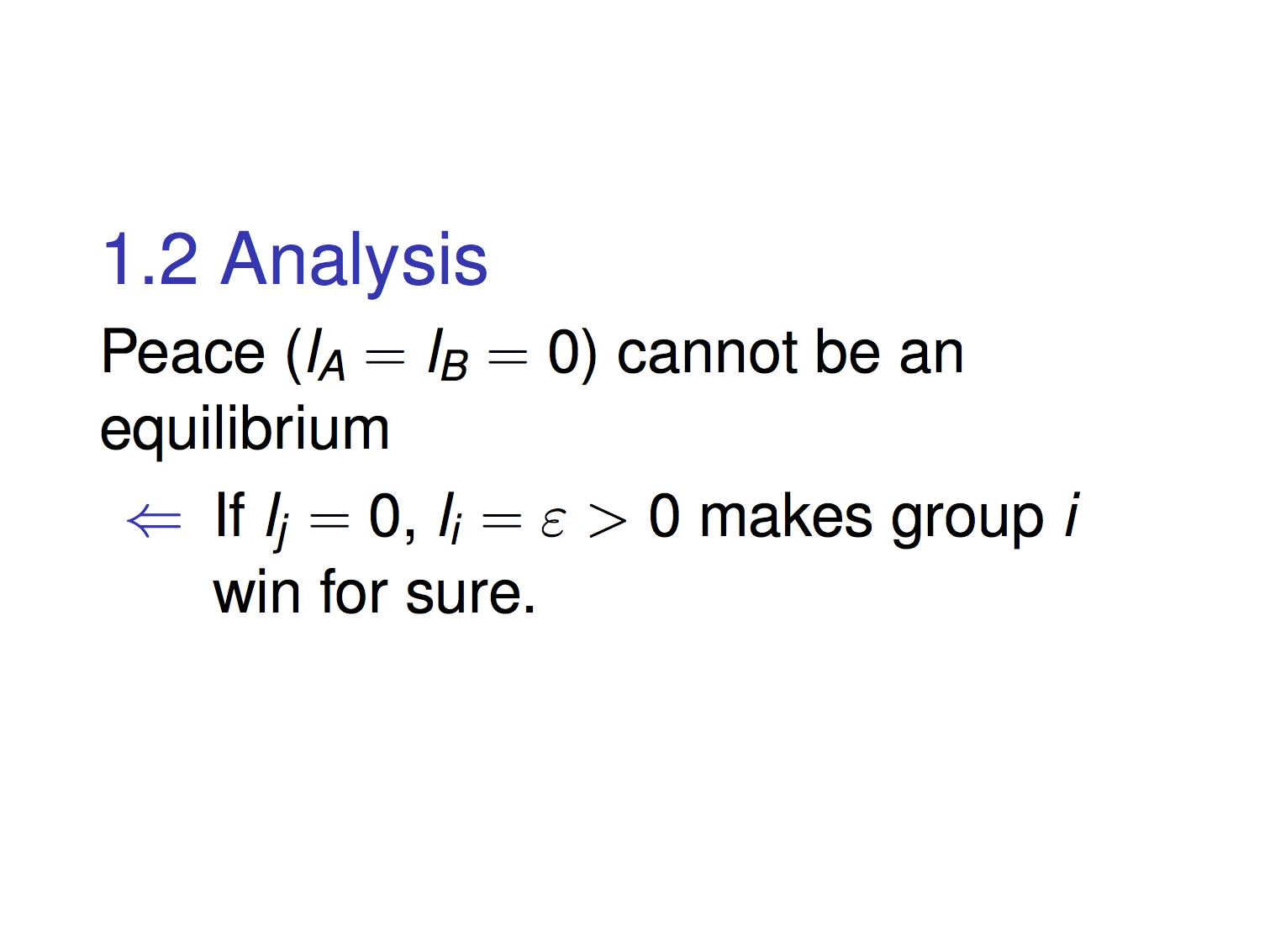
Analysis
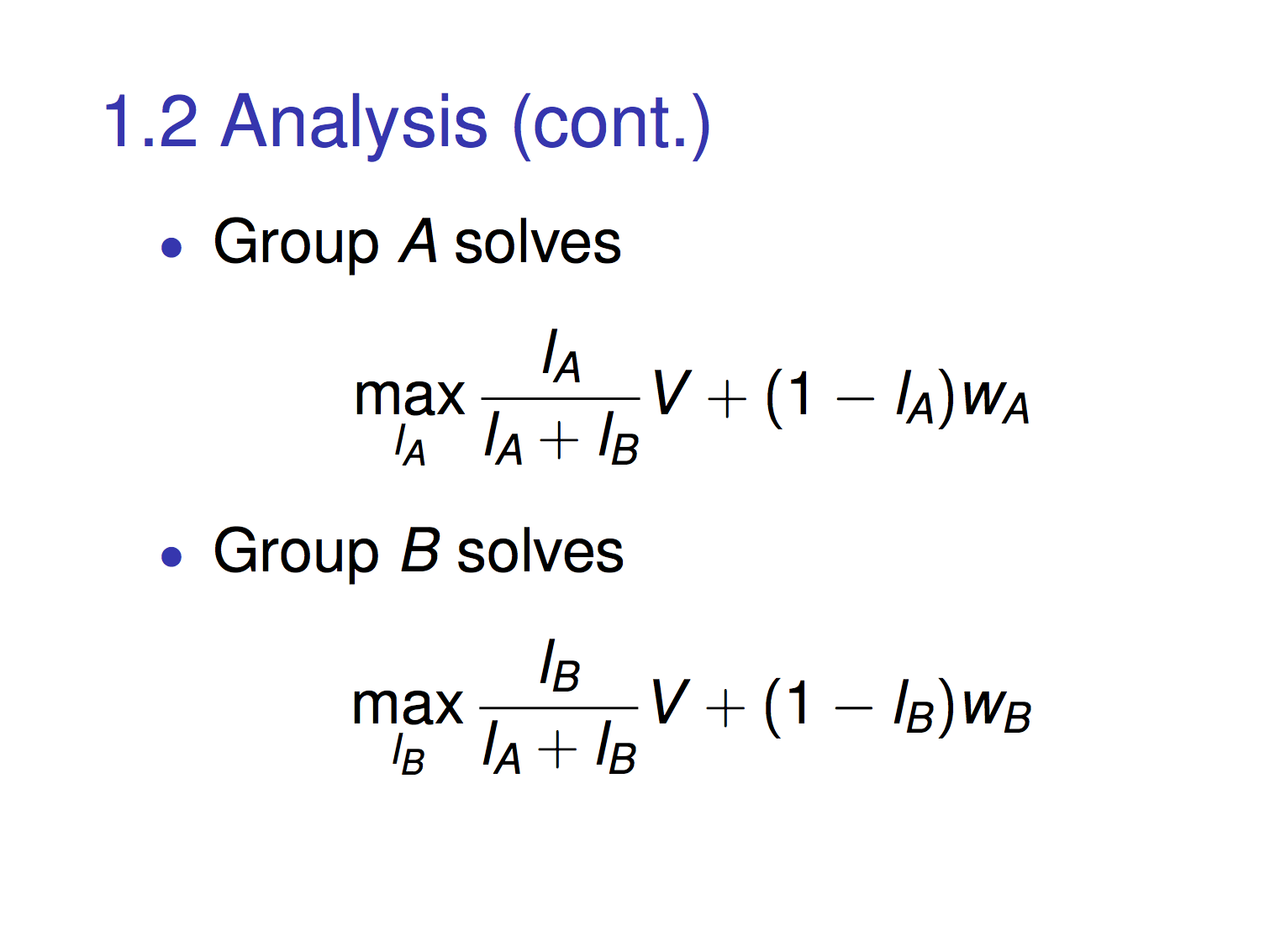
Analysis (cont.)
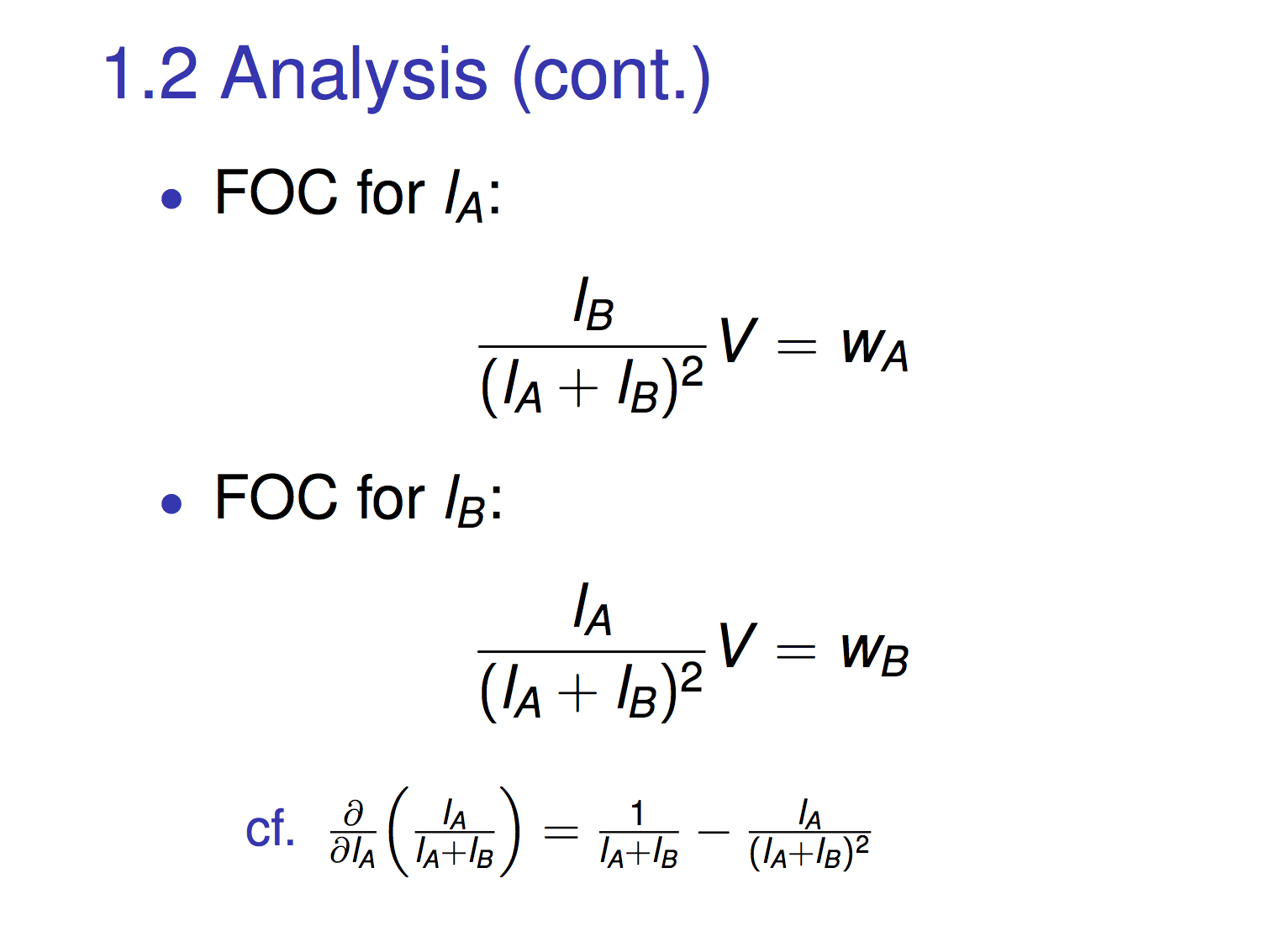
Analysis (cont.)

Analysis (cont.)
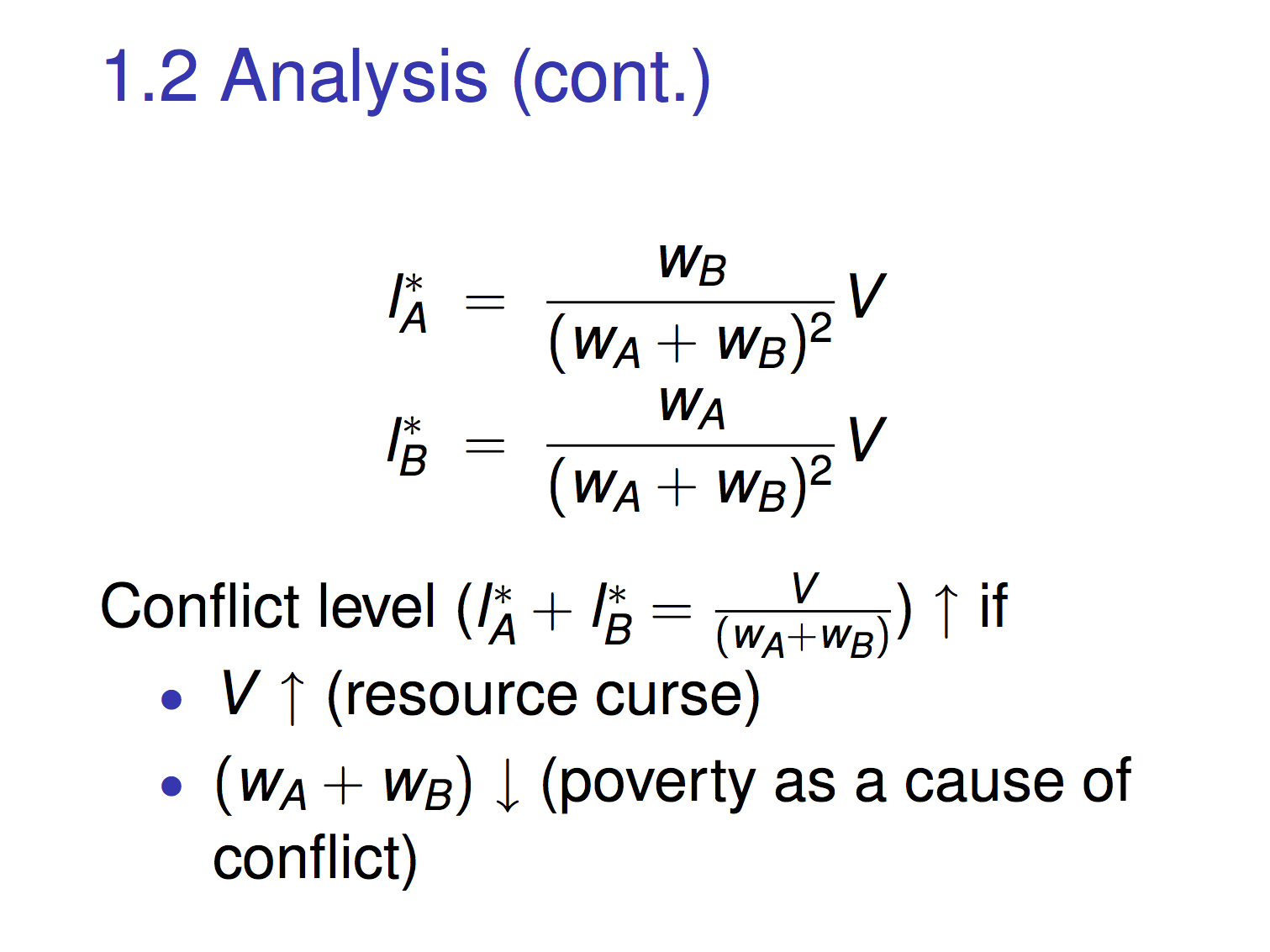
Analysis (cont.)
Evidence
Dube and Vargas (2013 Restud) provide evidence
A nice example of how to conduct
theoretically-motivated
instrumental variable estimation with a panel data
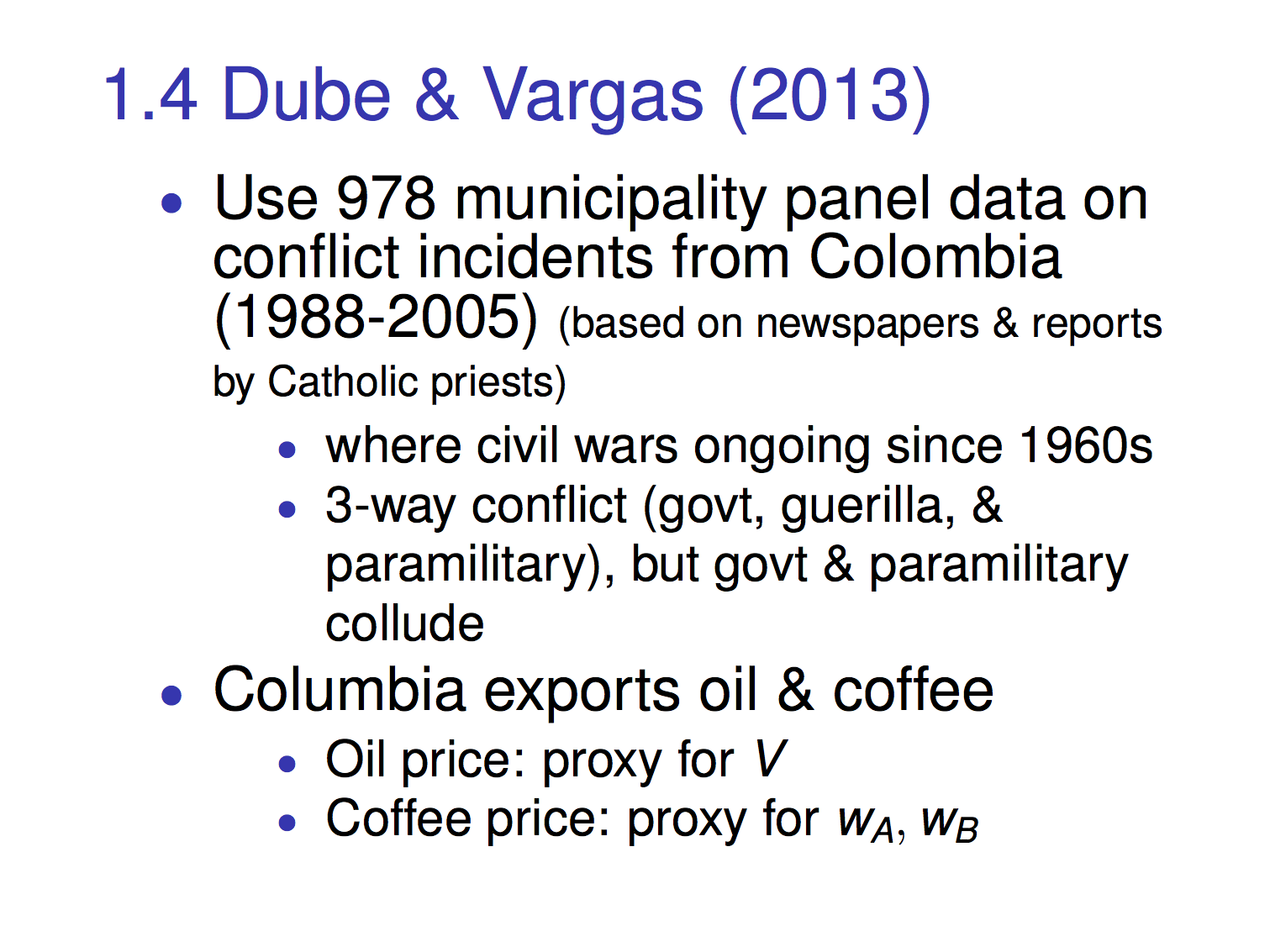
Evidence: Data
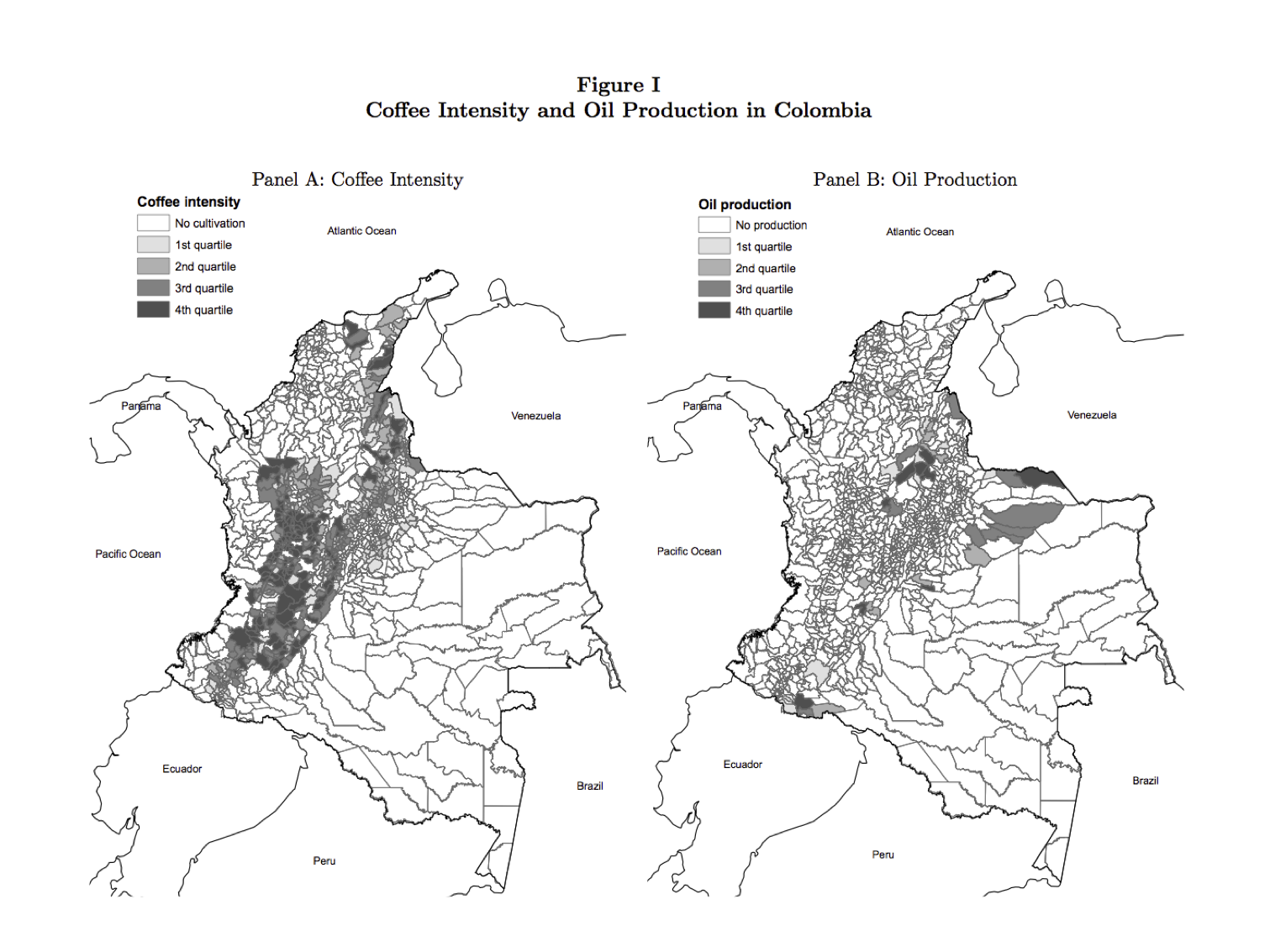
Figure 1 of Dube and Vargas (2013)
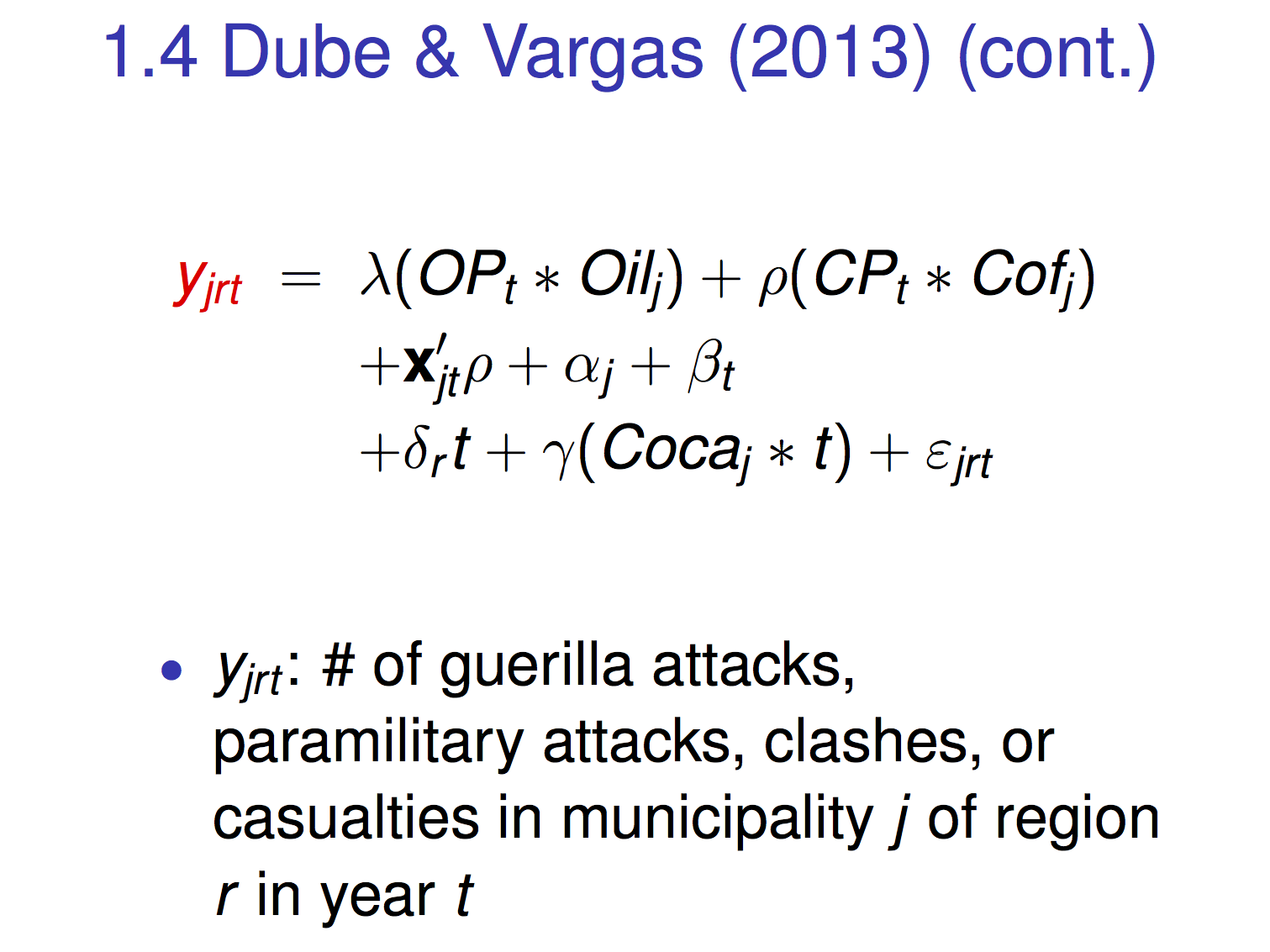
Evidence: Estimation equation
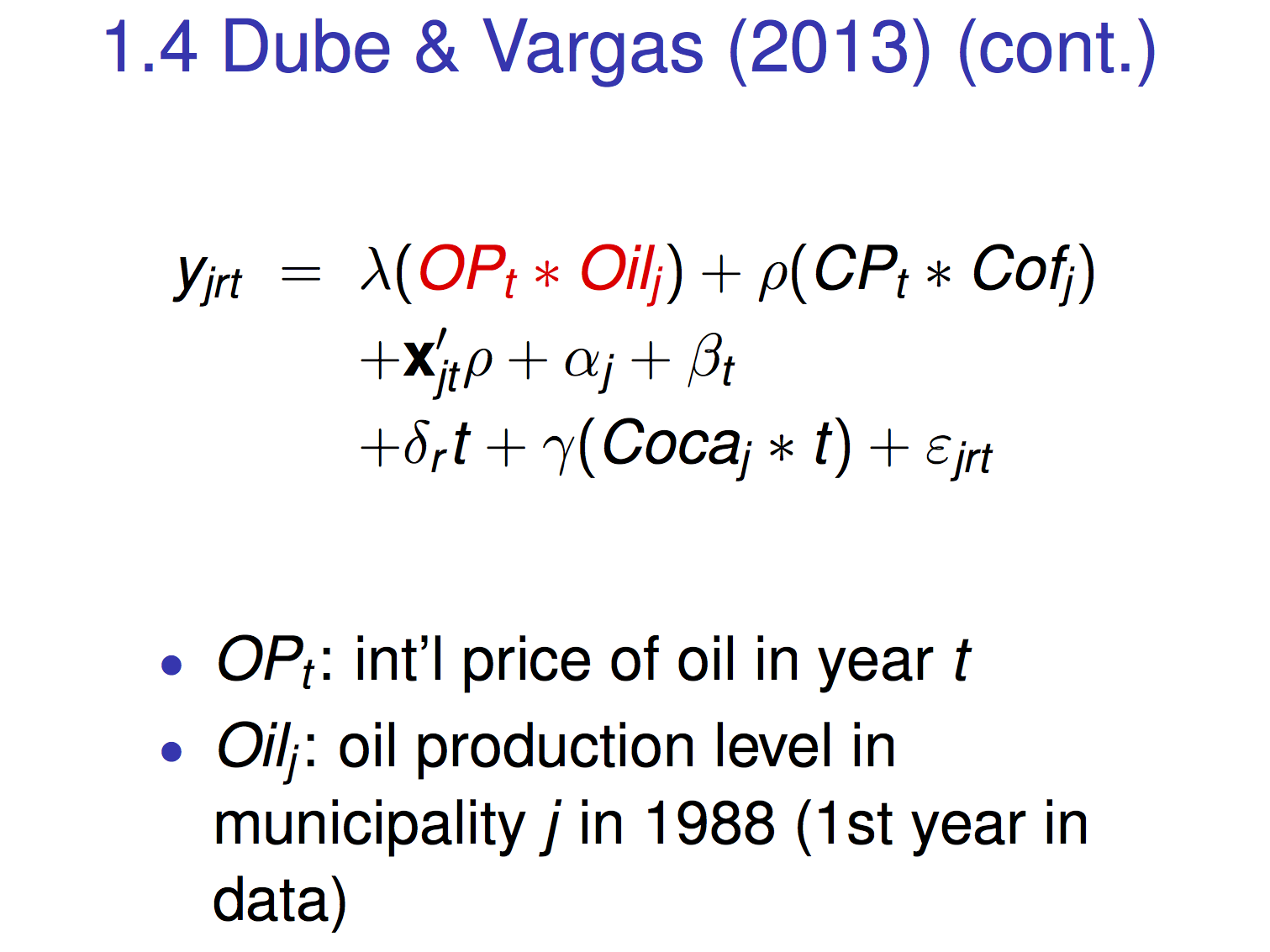
Evidence: Estimation equation
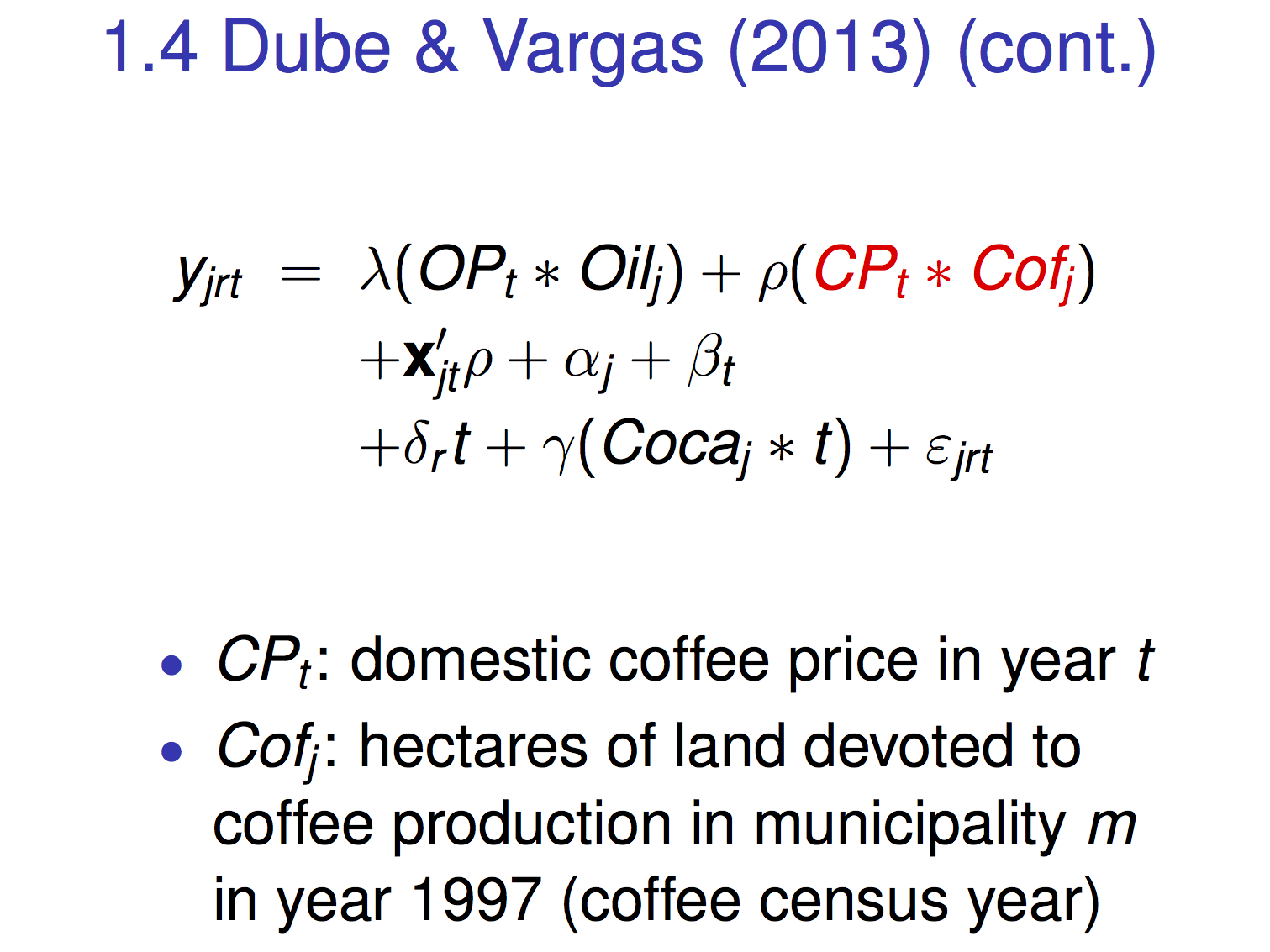
Evidence: Estimation equation
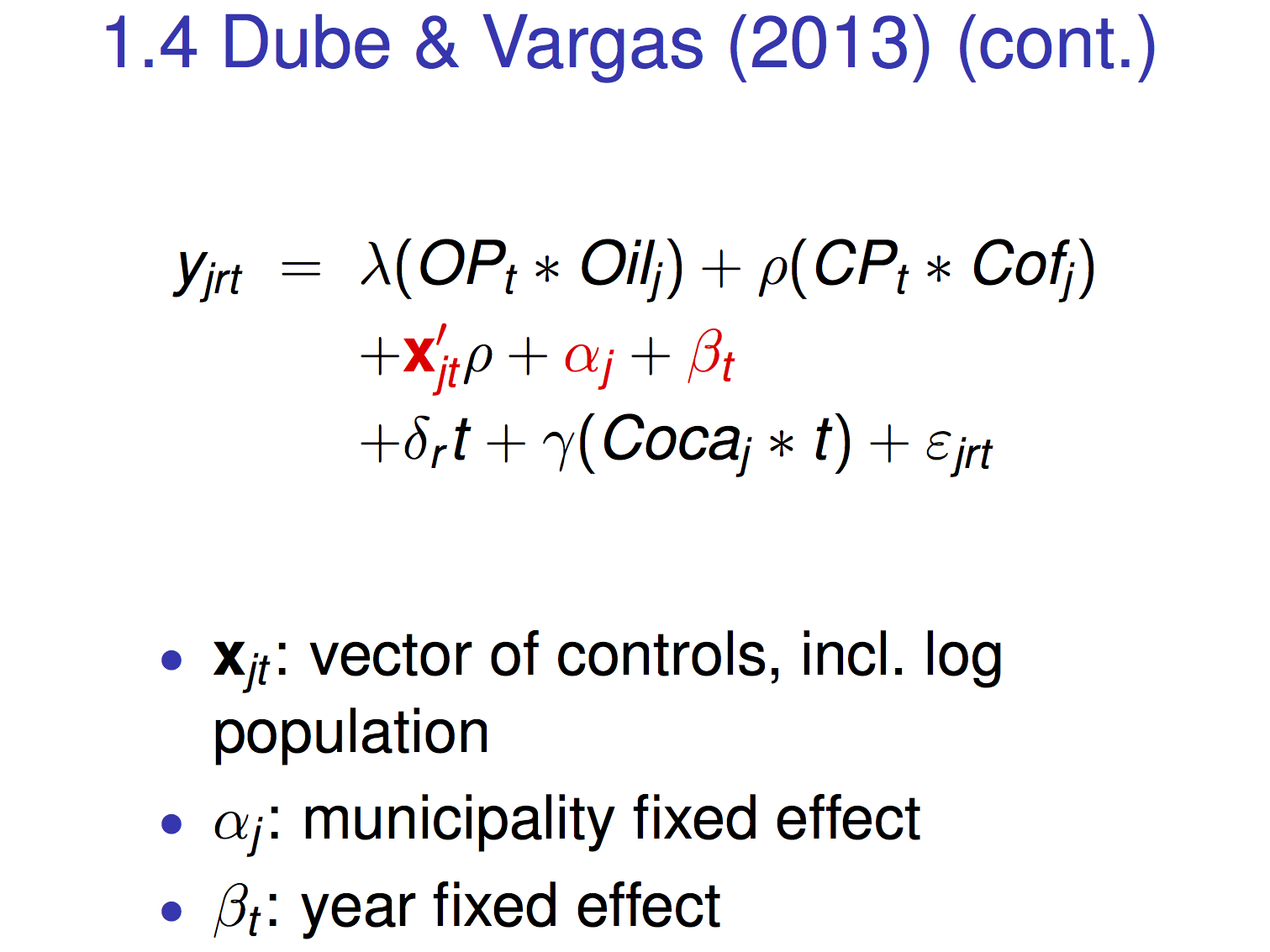
Evidence: Estimation equation
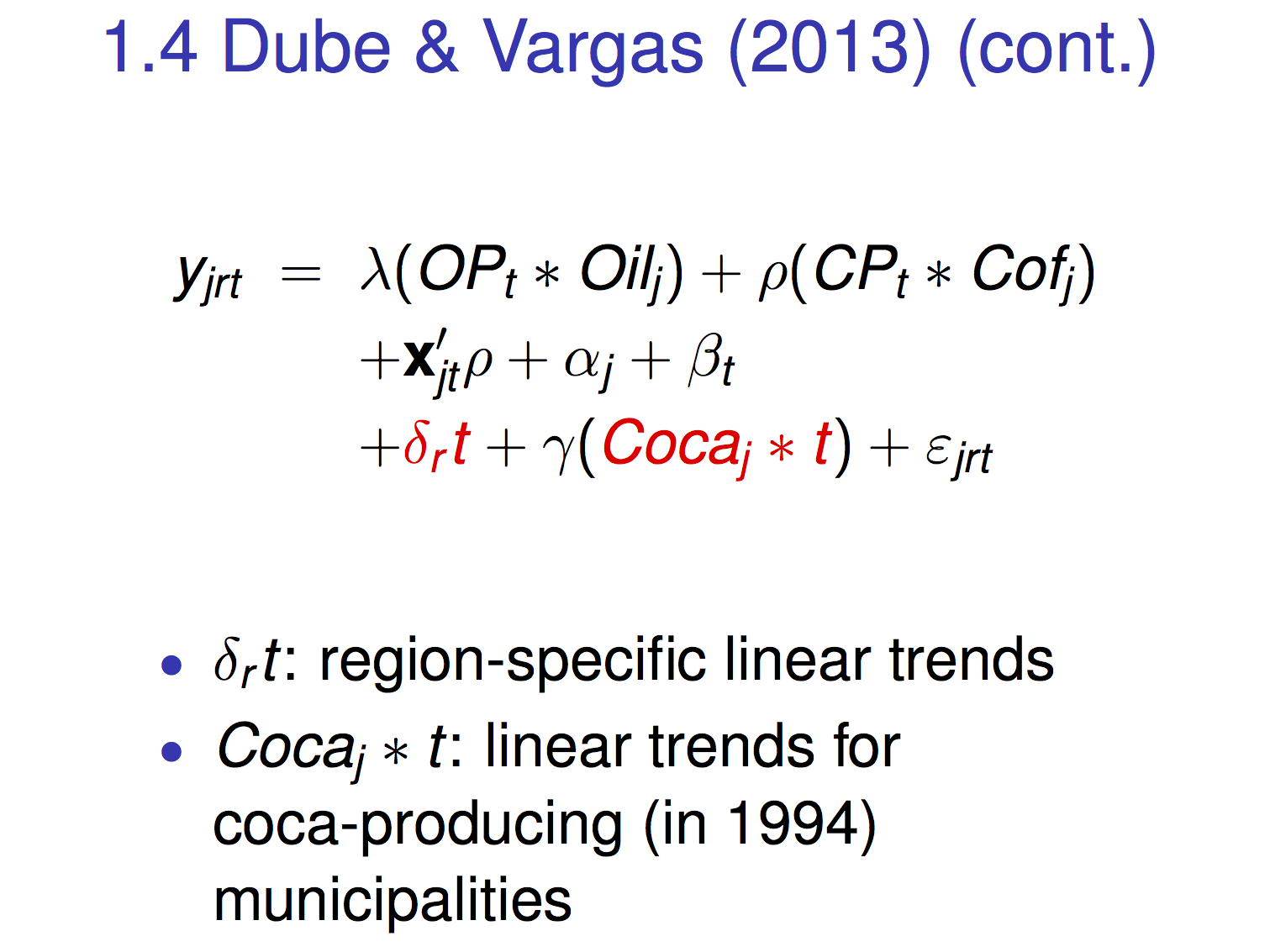
Evidence: Estimation equation
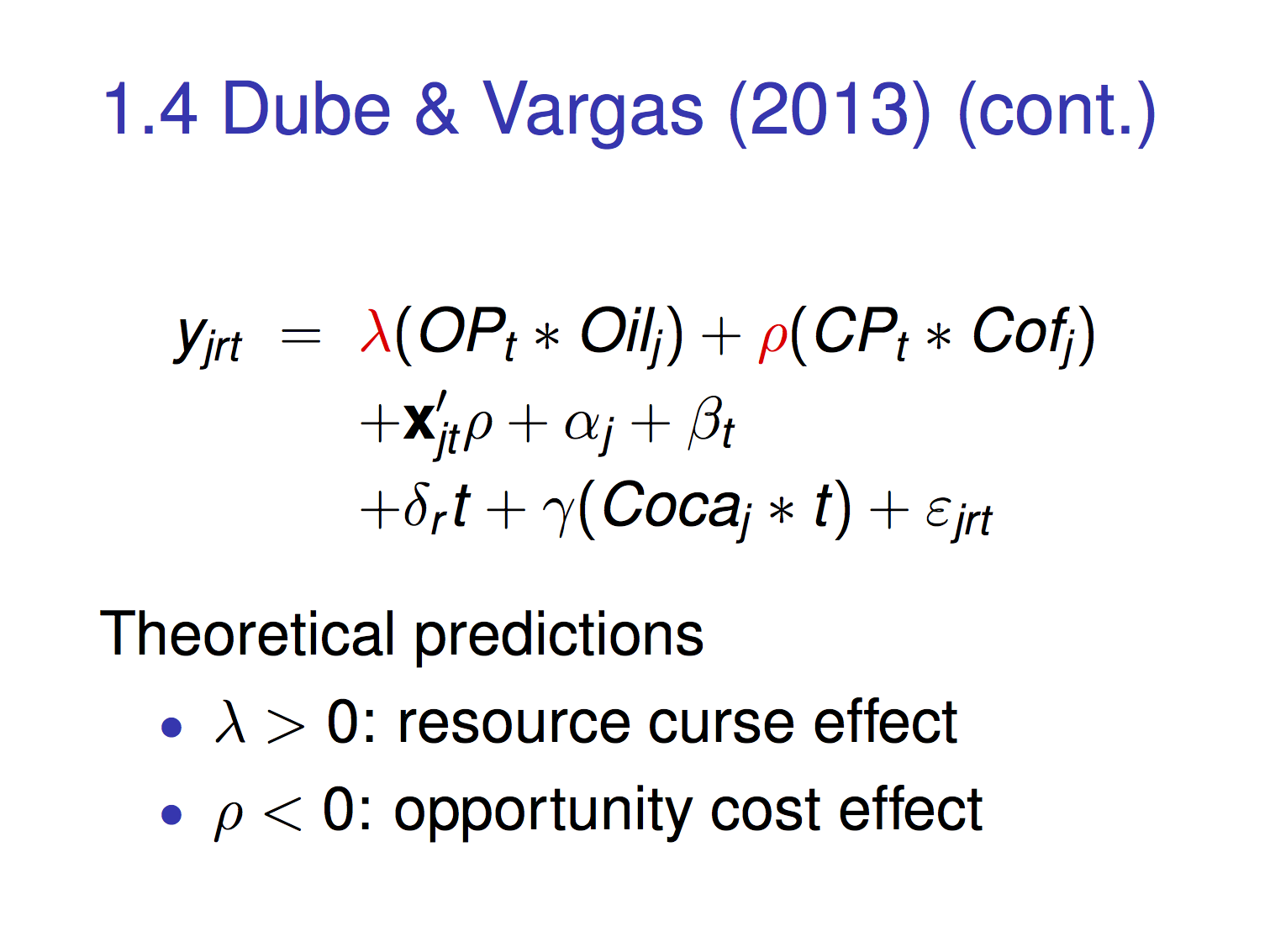
Evidence: Predictions
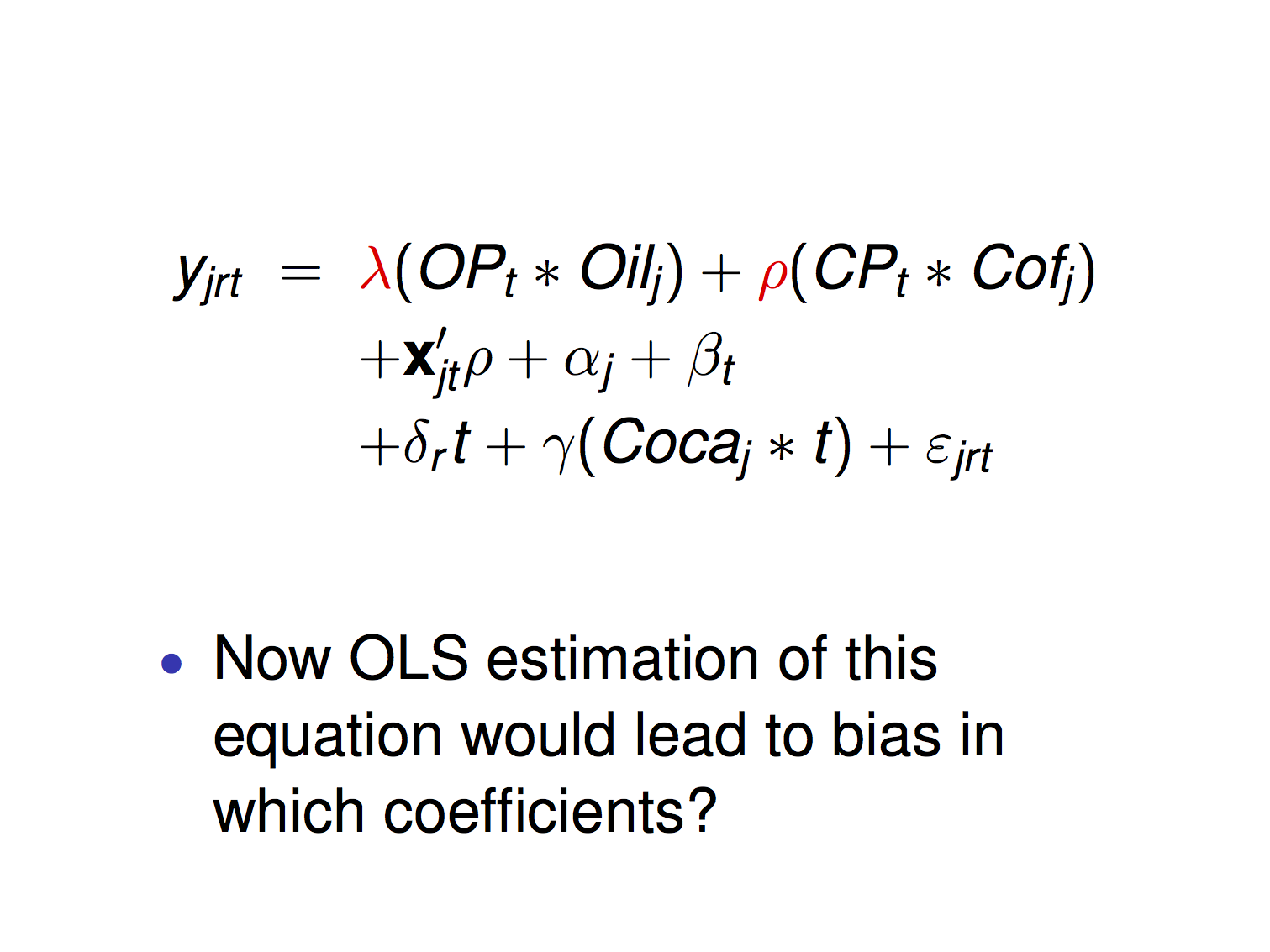
Evidence: Identification strategy
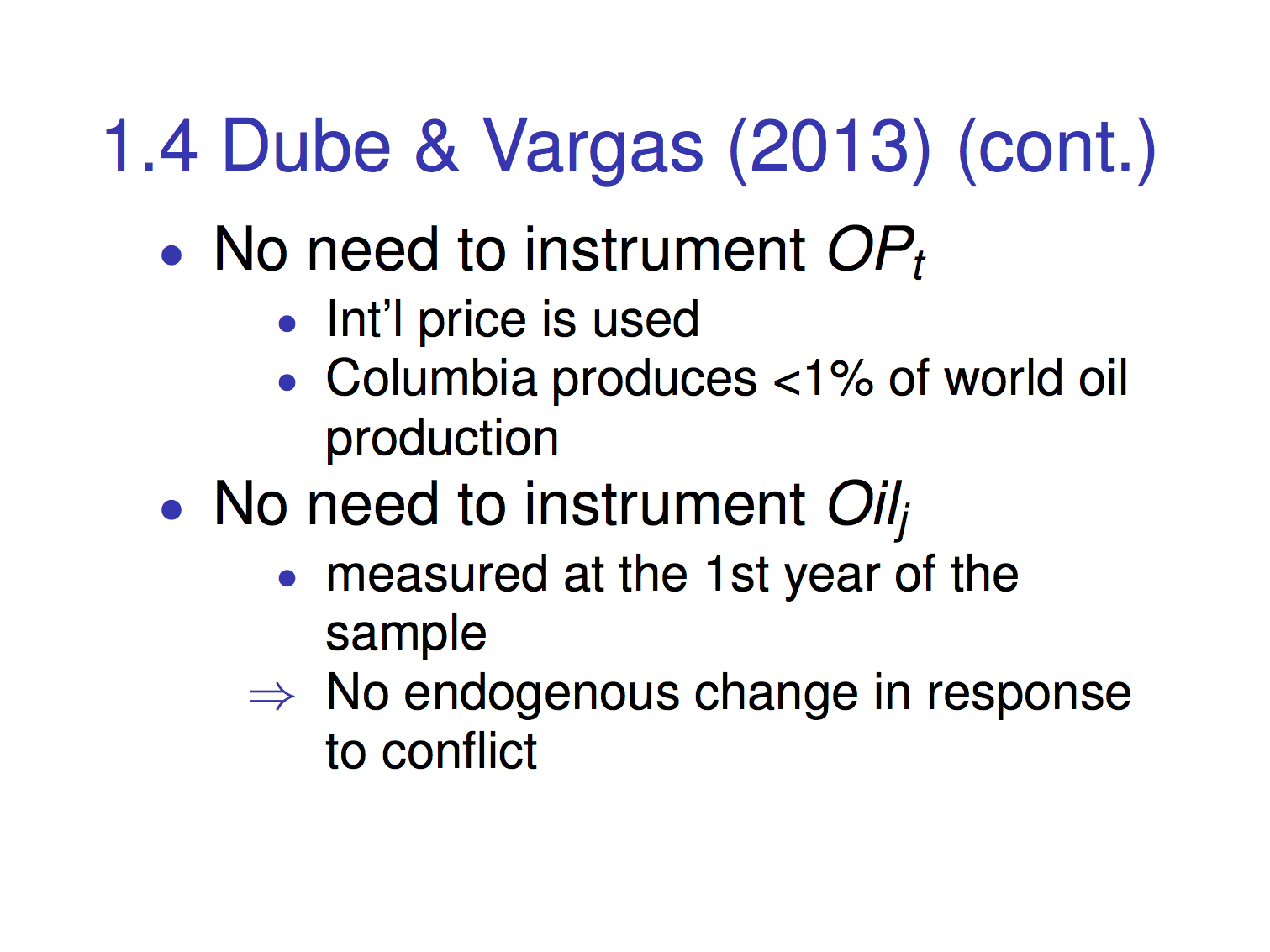
Evidence: Identification strategy
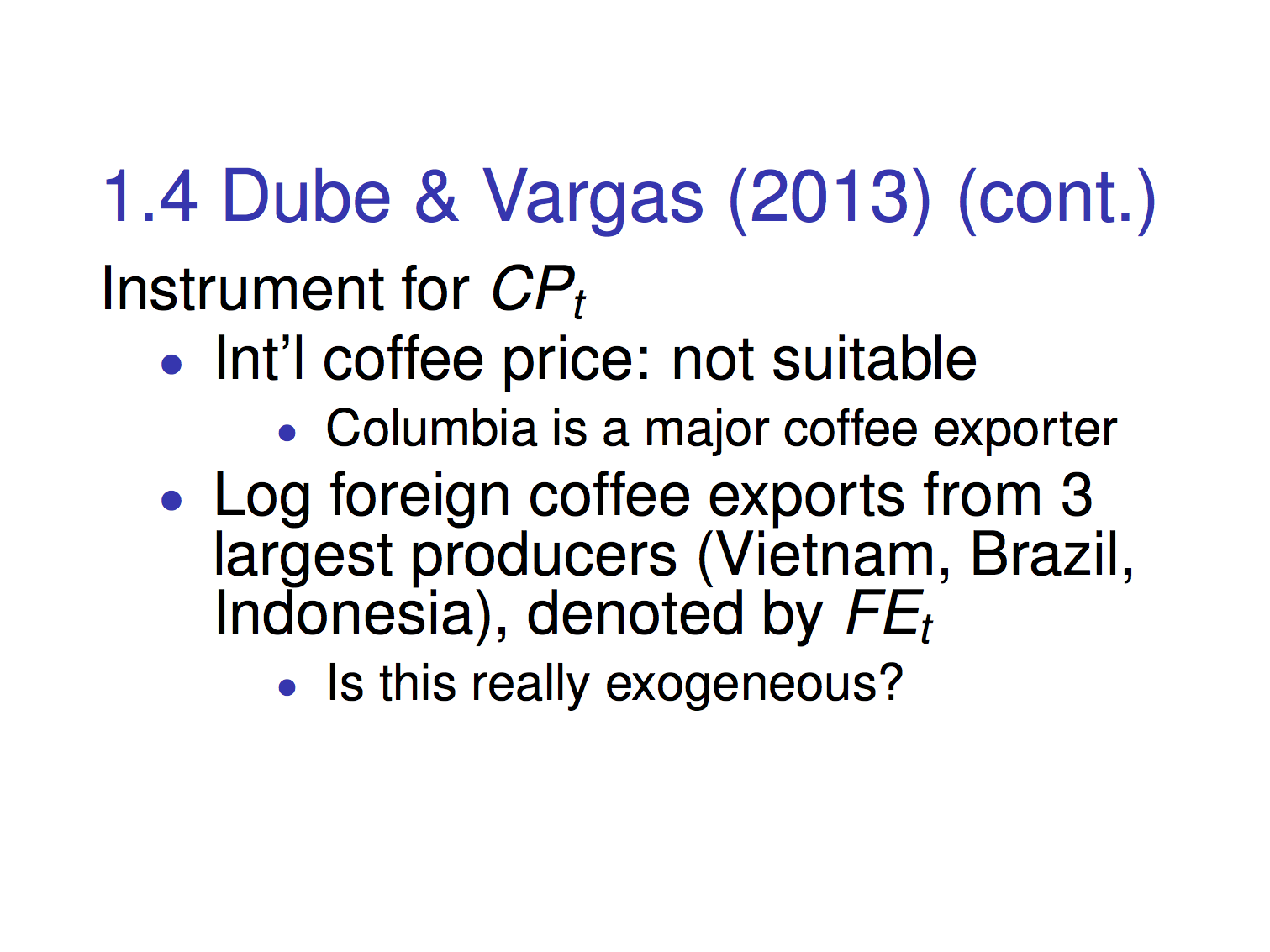
Evidence: Identification strategy
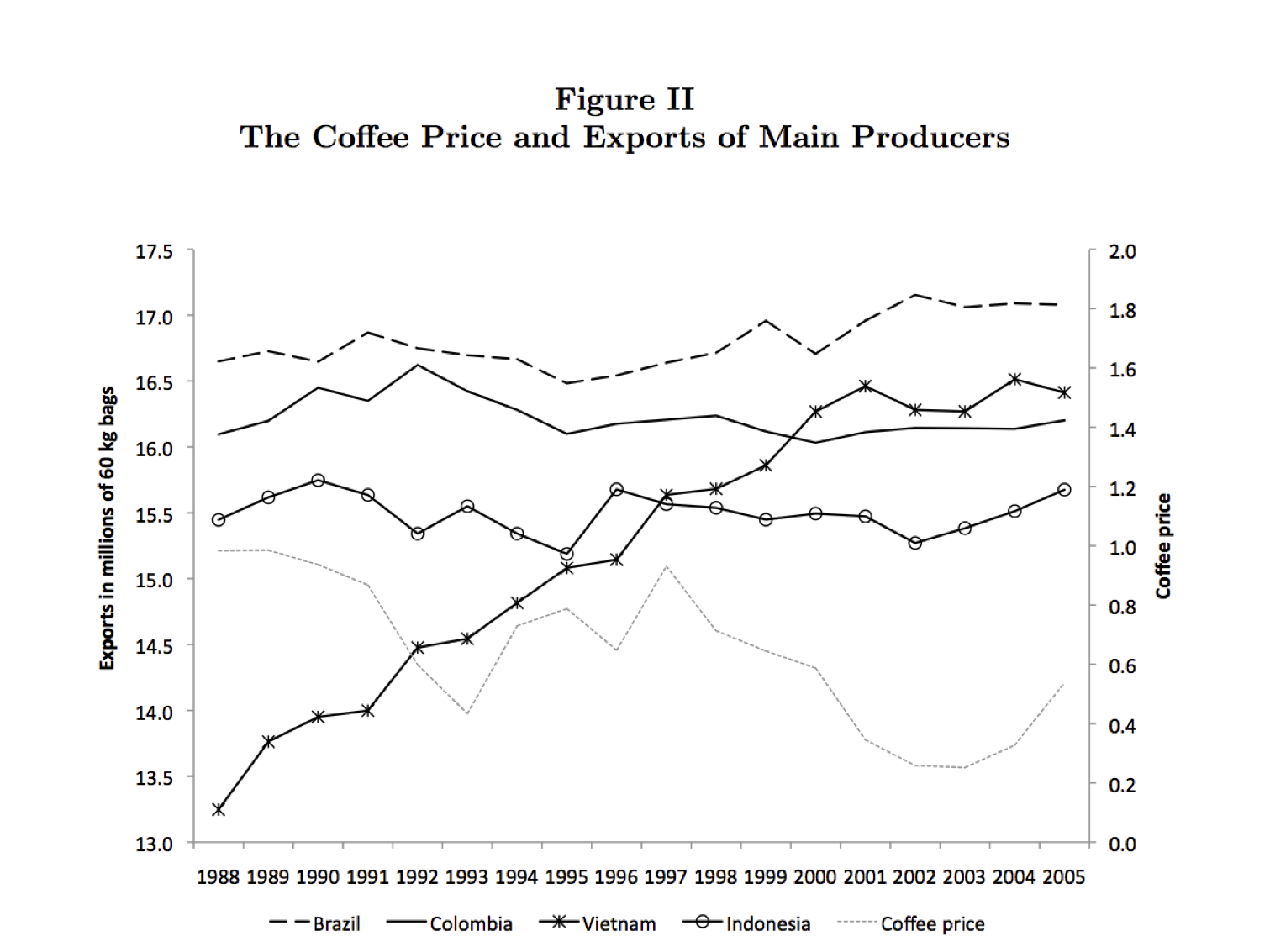
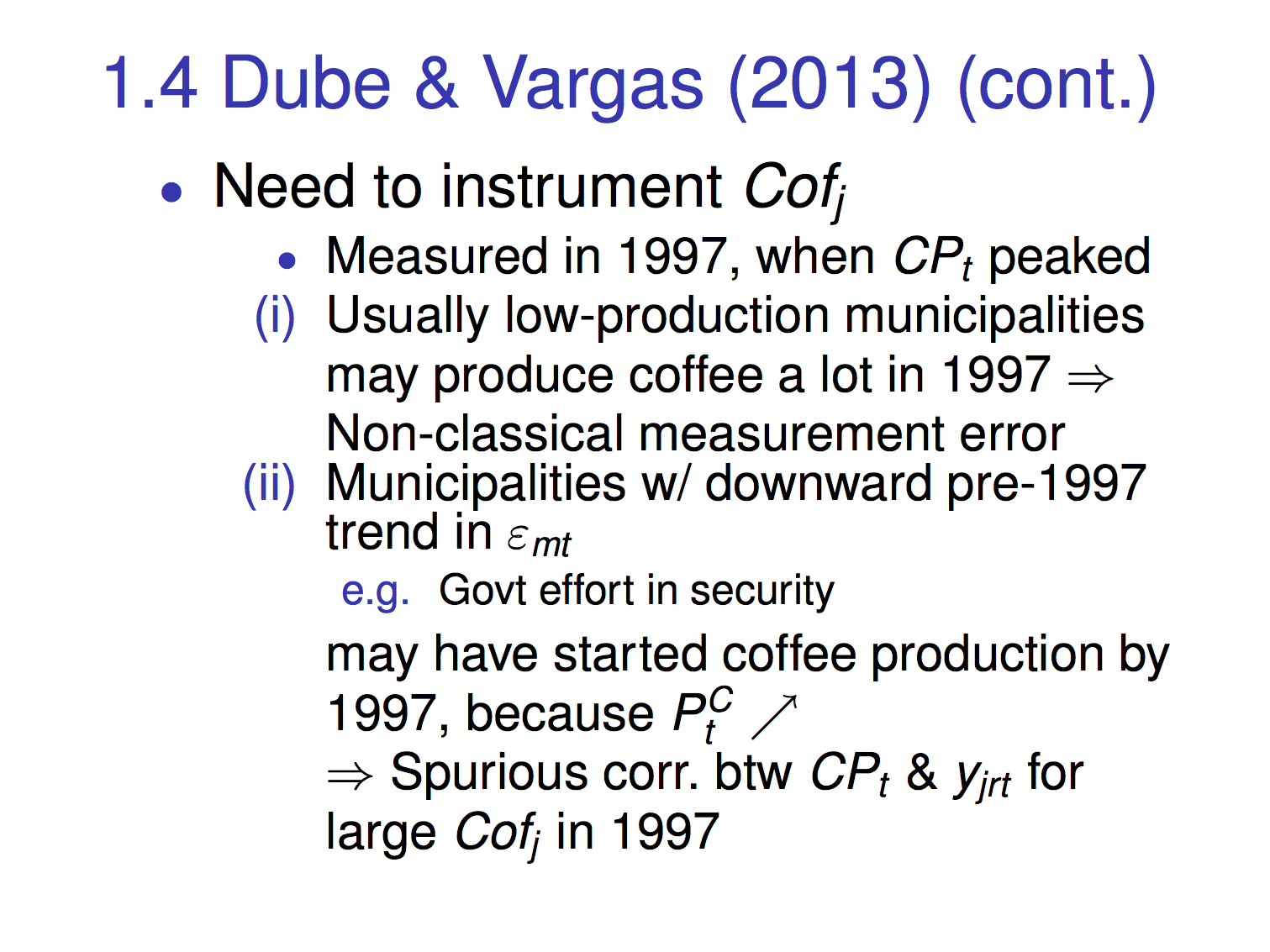
Evidence: Identification strategy
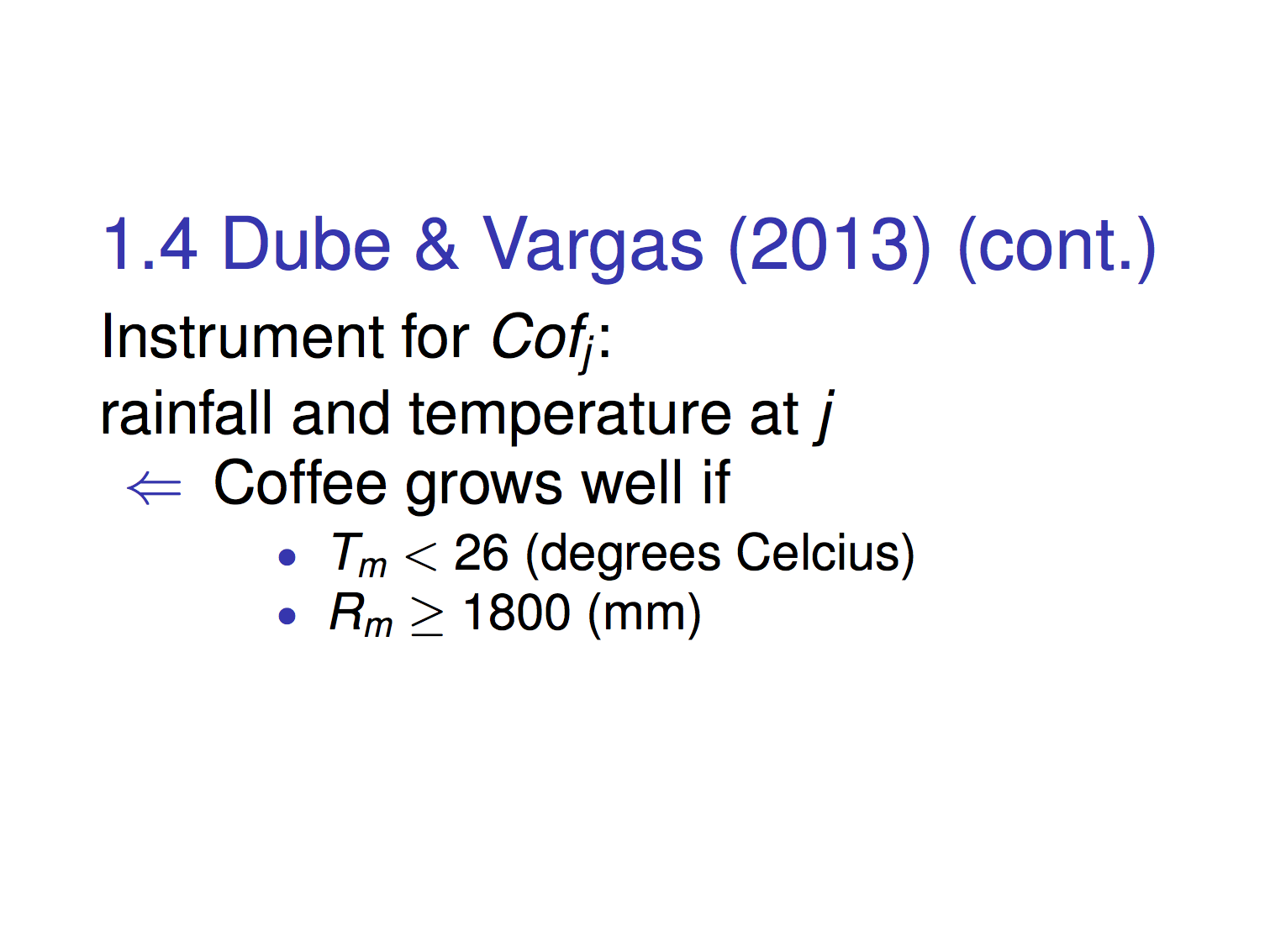
Evidence: Identification strategy
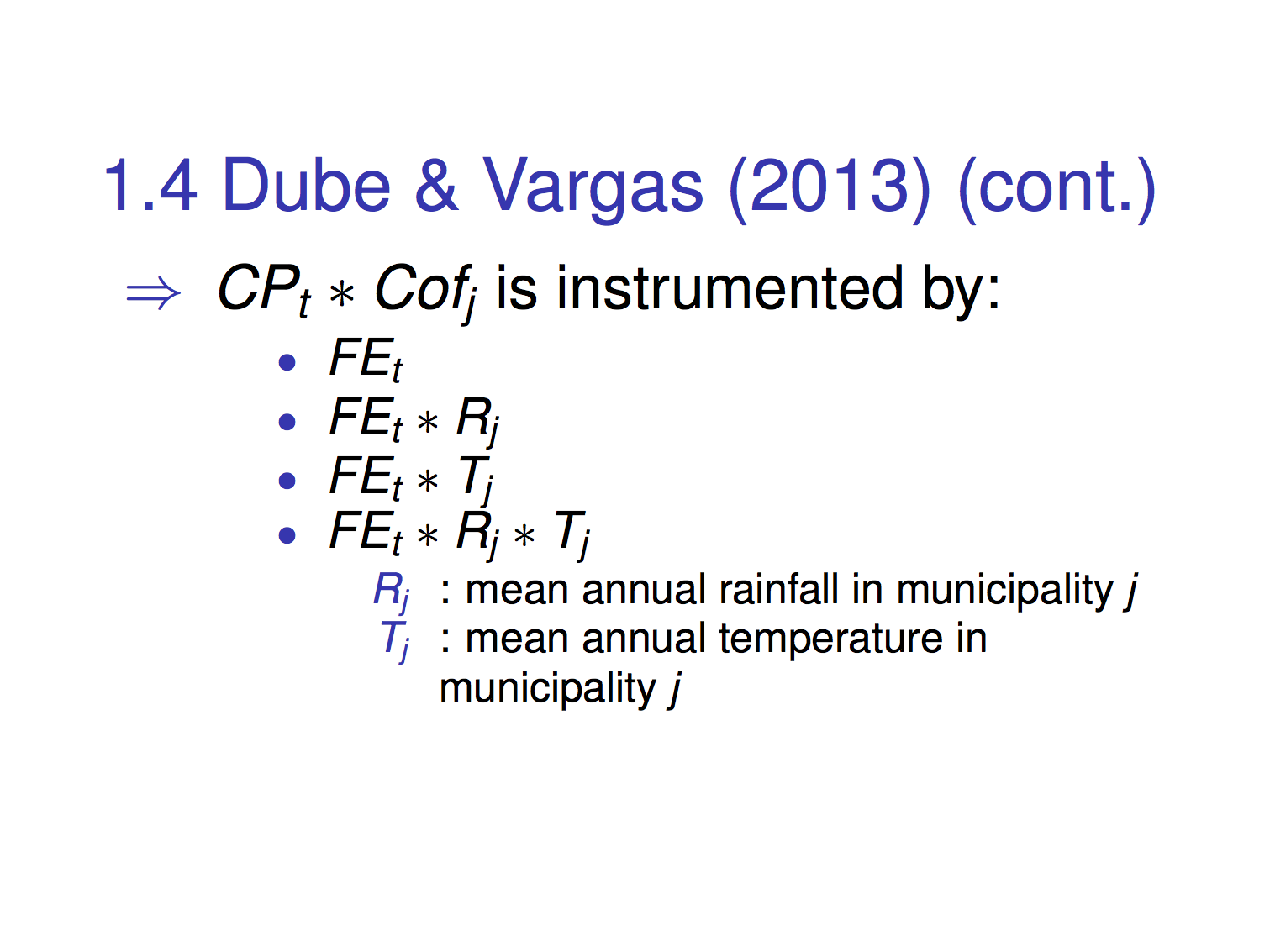
Evidence: Identification strategy
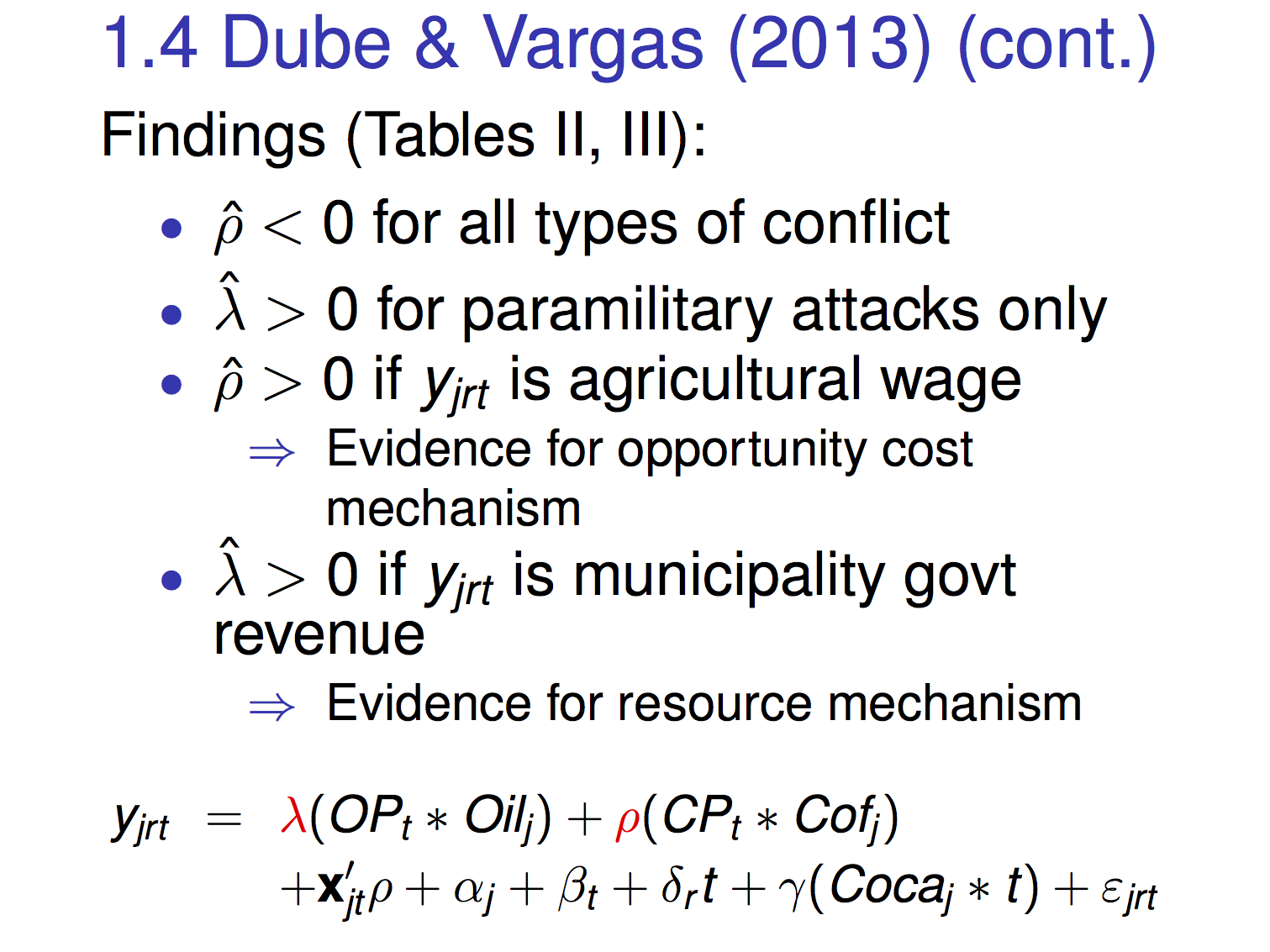
Evidence: Results (Tables II & III)
Latest research on economic factors
A rise in food price reduces conflict over territory
but increases conflict over crop harvests
For all minerals and all African countries
a higher price on mineral increases local conflict
Rebels from an area with mines spread conflict more likely
in support of the feasibility channel of the resource curse
Latest research on economic factors
Impact of temperature
Meta analysis by Burke, Hsiang, and Miguel (2015)
Temperature
by 1 s.d.
Conflict
by 11.3%
For 1400-1900, a drop in temperature increases conflicts
Latest research on economic factors
Impact of foreign aid
US food aid increases conflicts in recipient countries
Instrumented by wheat production in US
Development aid programs increase conflicts in the Philippines
Municipalities below the poverty threshold receive aid
Regression discontinuity
Extensions of the contest model
Network externalities (Konig et al. 2017 Econometrica)
Define the contest success function for group \(i\) as
where
and \(A_i\) is a set of groups allied with group \(i\)
\(\beta\) and \(\gamma\) are estimated from data for the Congo War
by instrumenting \(x_k\) with rainfall in group \(k\)'s homeland
Extensions of the contest model (cont.)
How ethnic diversity intensifies conflict
The prize of winners is either public or private goods
Share of the prize divided among group i members
Share of the prize used for public good
The higher \(\lambda\), the polarization of ethnic groups's preference matters more than the fractionalization of ethnic groups
Applications of the contest model
to other topics than conflicts
Endogenous private property rights (Skaperdas 1992)
Lobbying
Kang (2016 Restud) to structurally estimate the return to lobbying
Avis et al. (2017) to estimate the impact of capping campaign spending in Brazil
Francois et al. (2017) to analyze factional politics in China
Applications of the contest model
to other topics than conflicts (cont.)
Private property rights (Skaperdas 1992)
Endogenous institutions
Nation states (Alesina et al. 2017)
Weak, despotic, or inclusive states (Acemoglu and Robinson 2017)
Limitations of the contest model
to explain the cause of conflicts
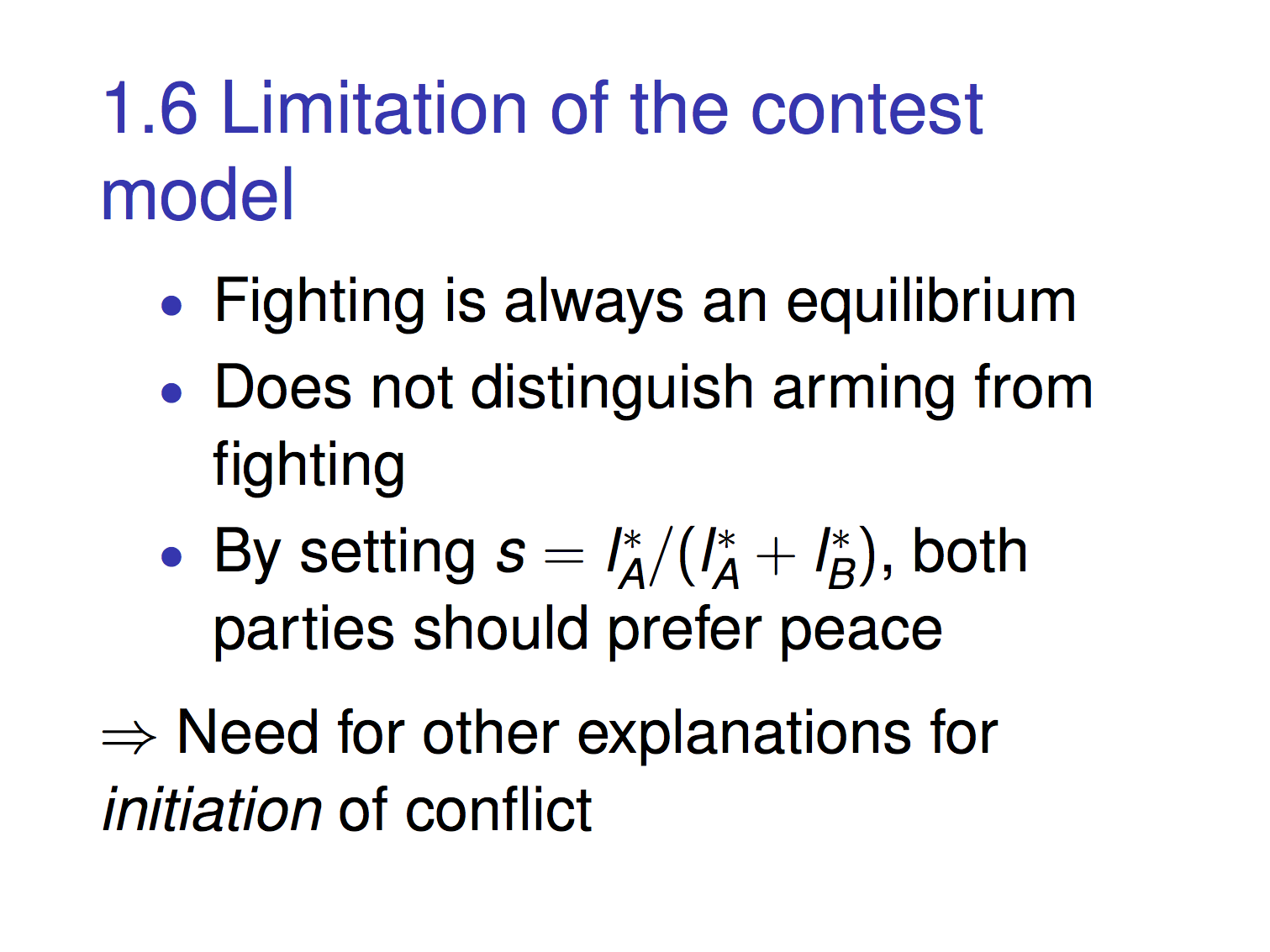
Information asymmetry
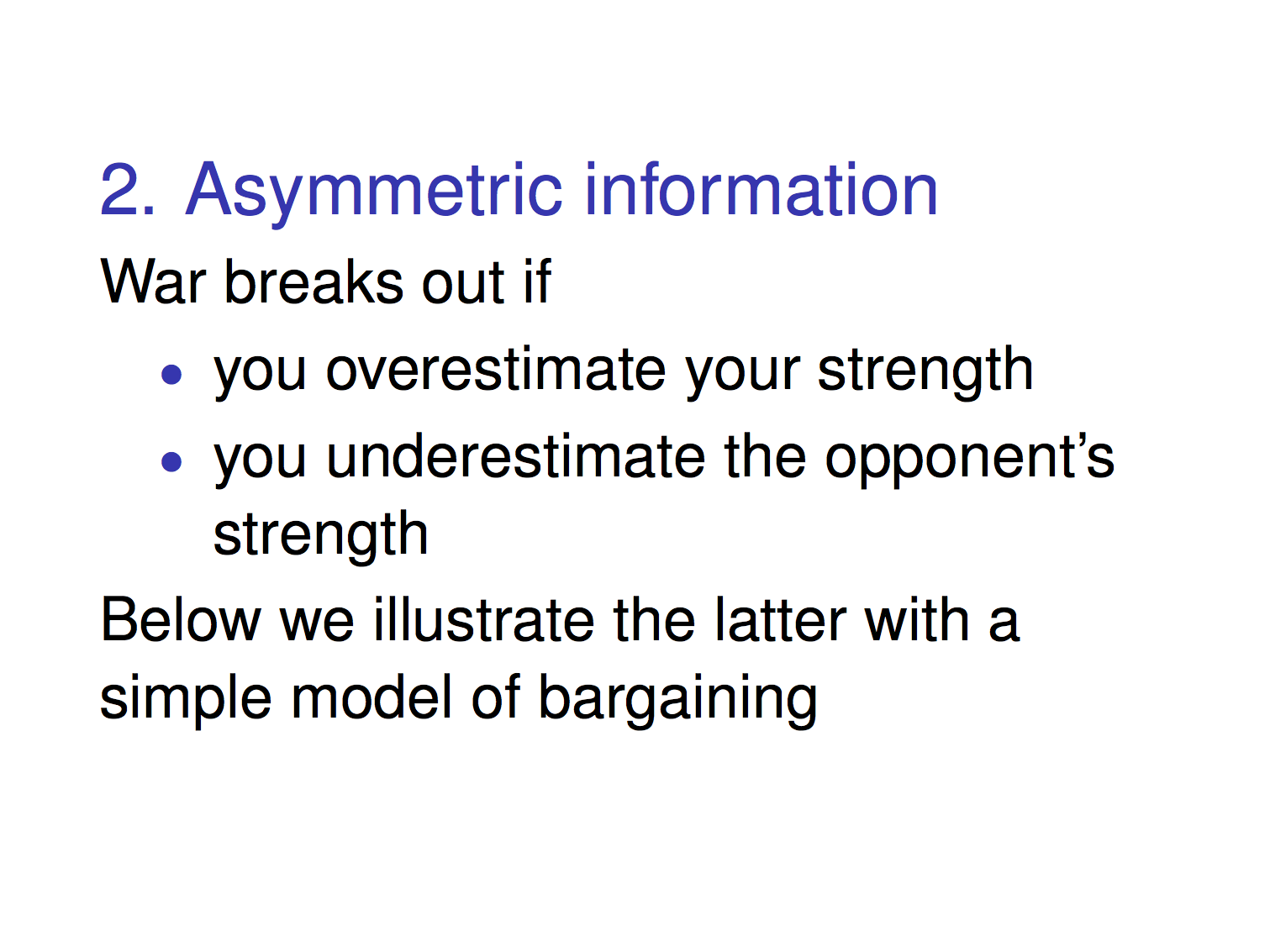
Basic idea
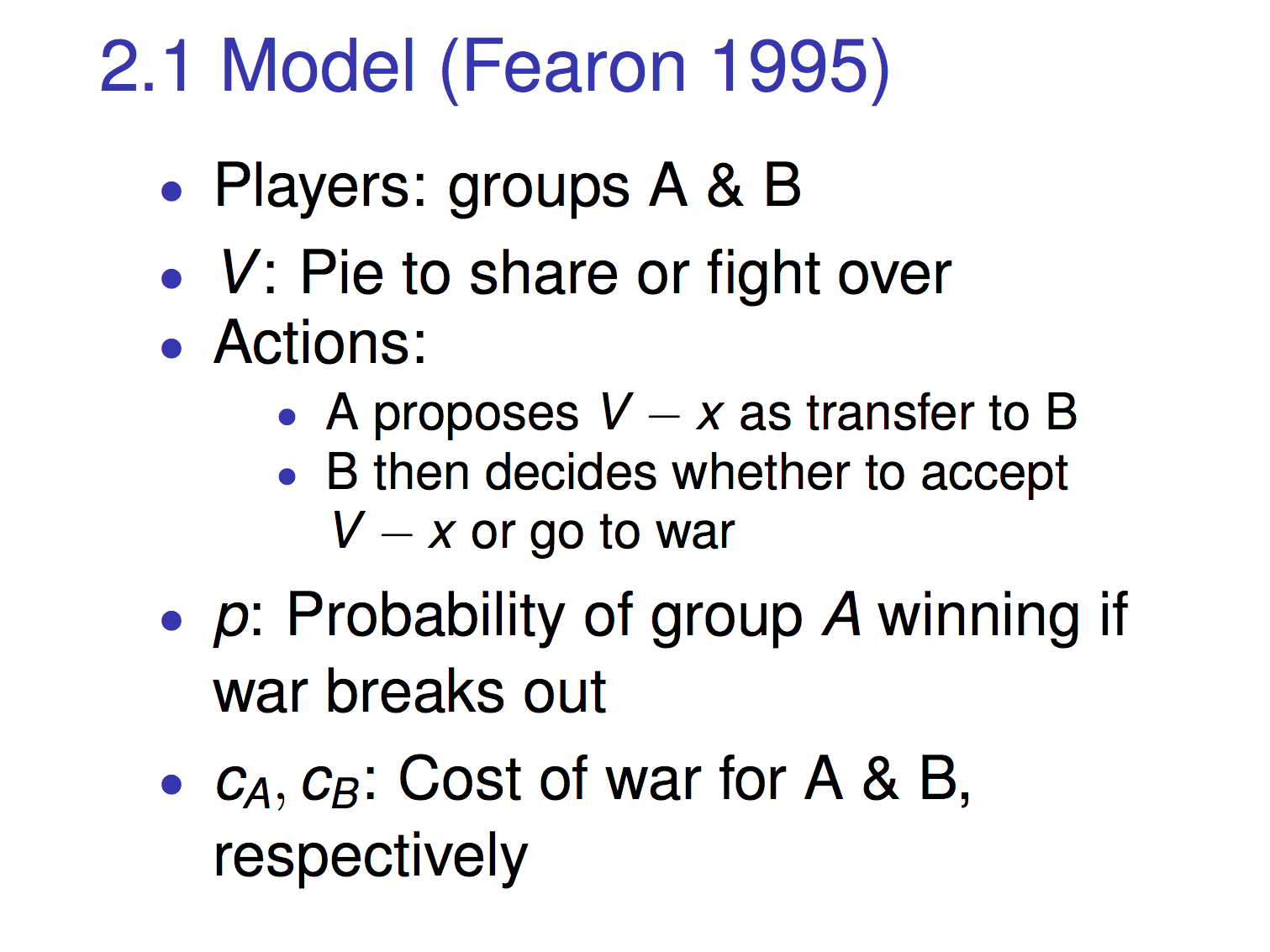
Model (1 out of 2)
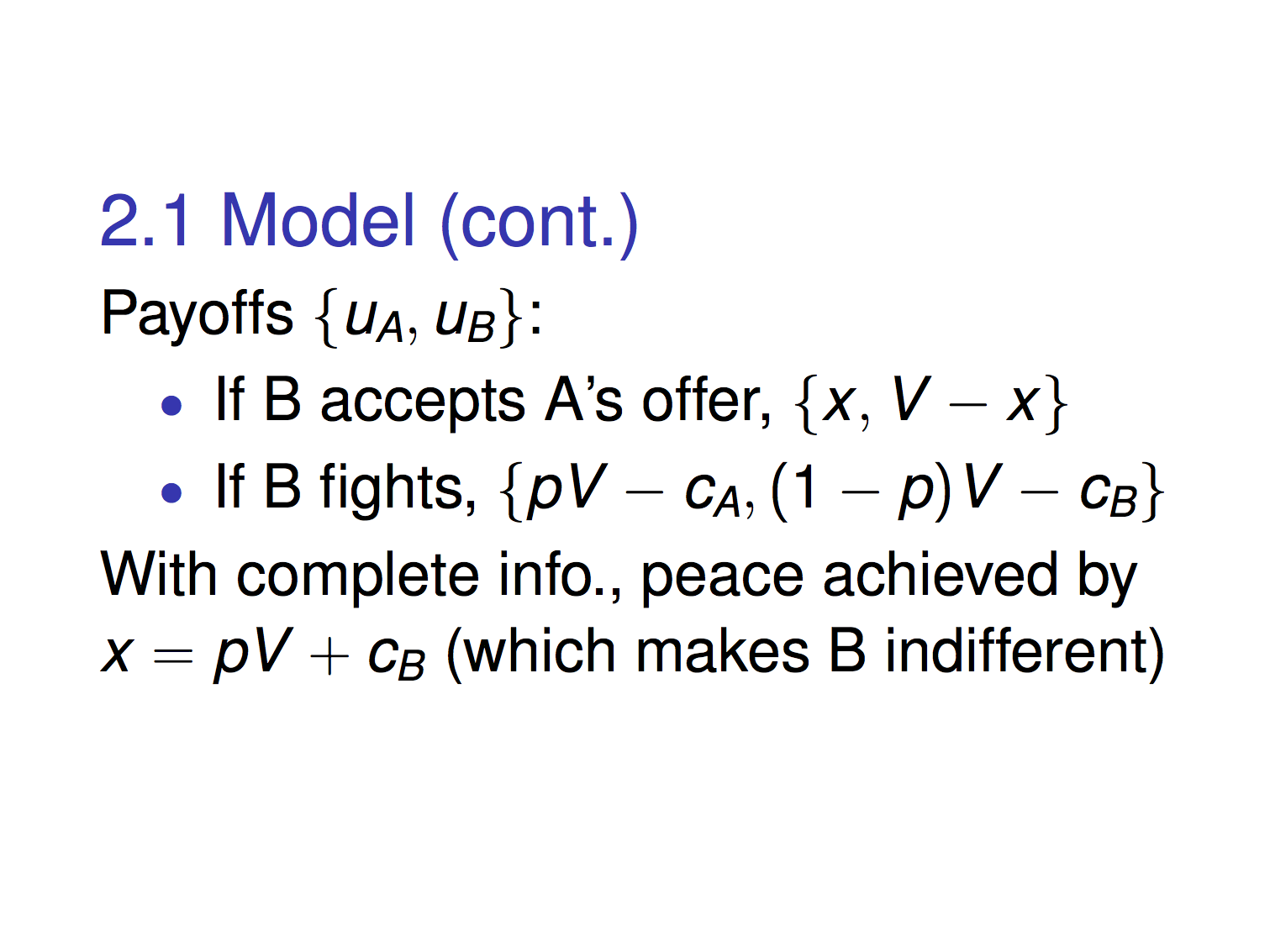
Model (2 out of 2)
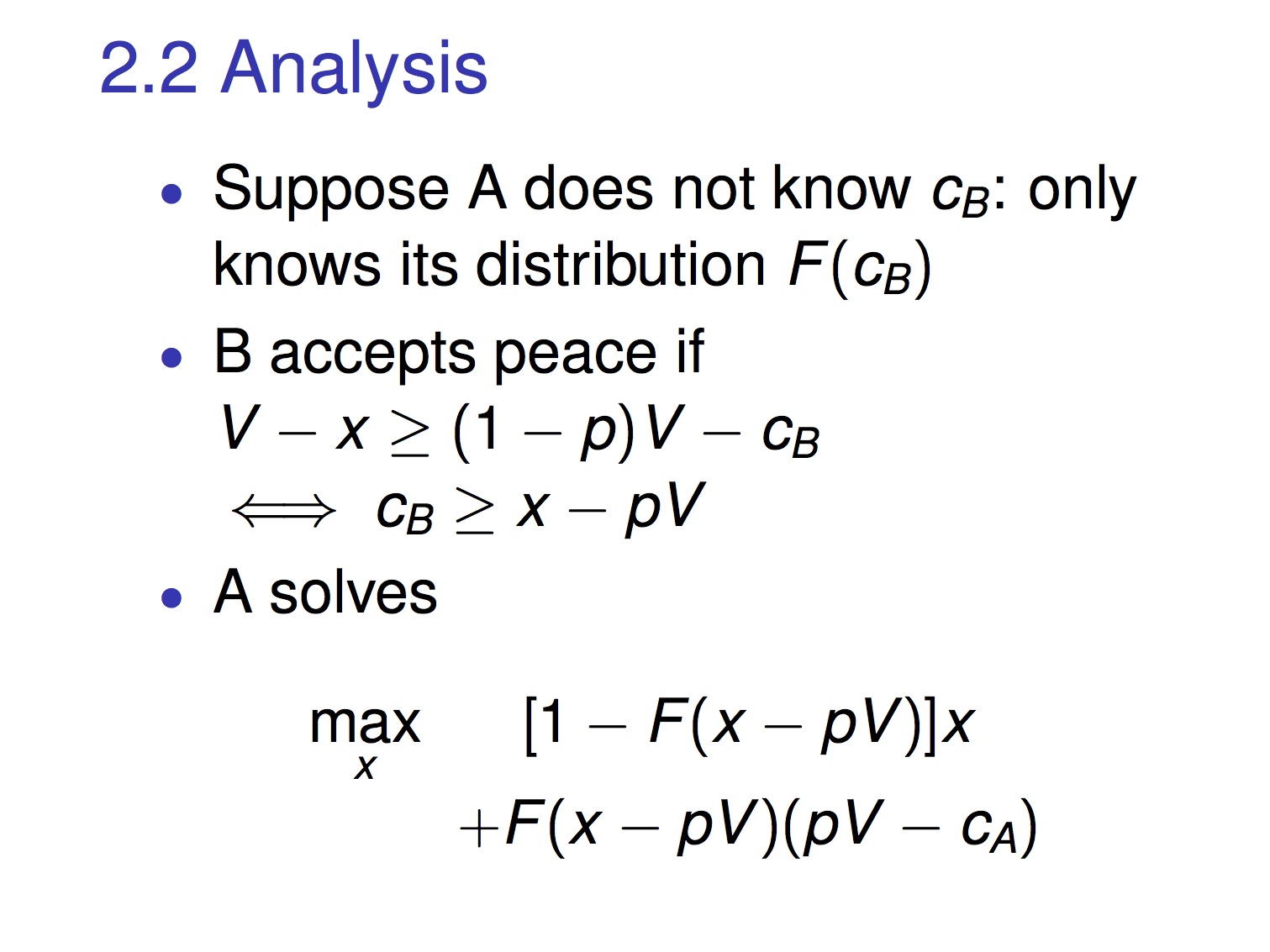
The role of information
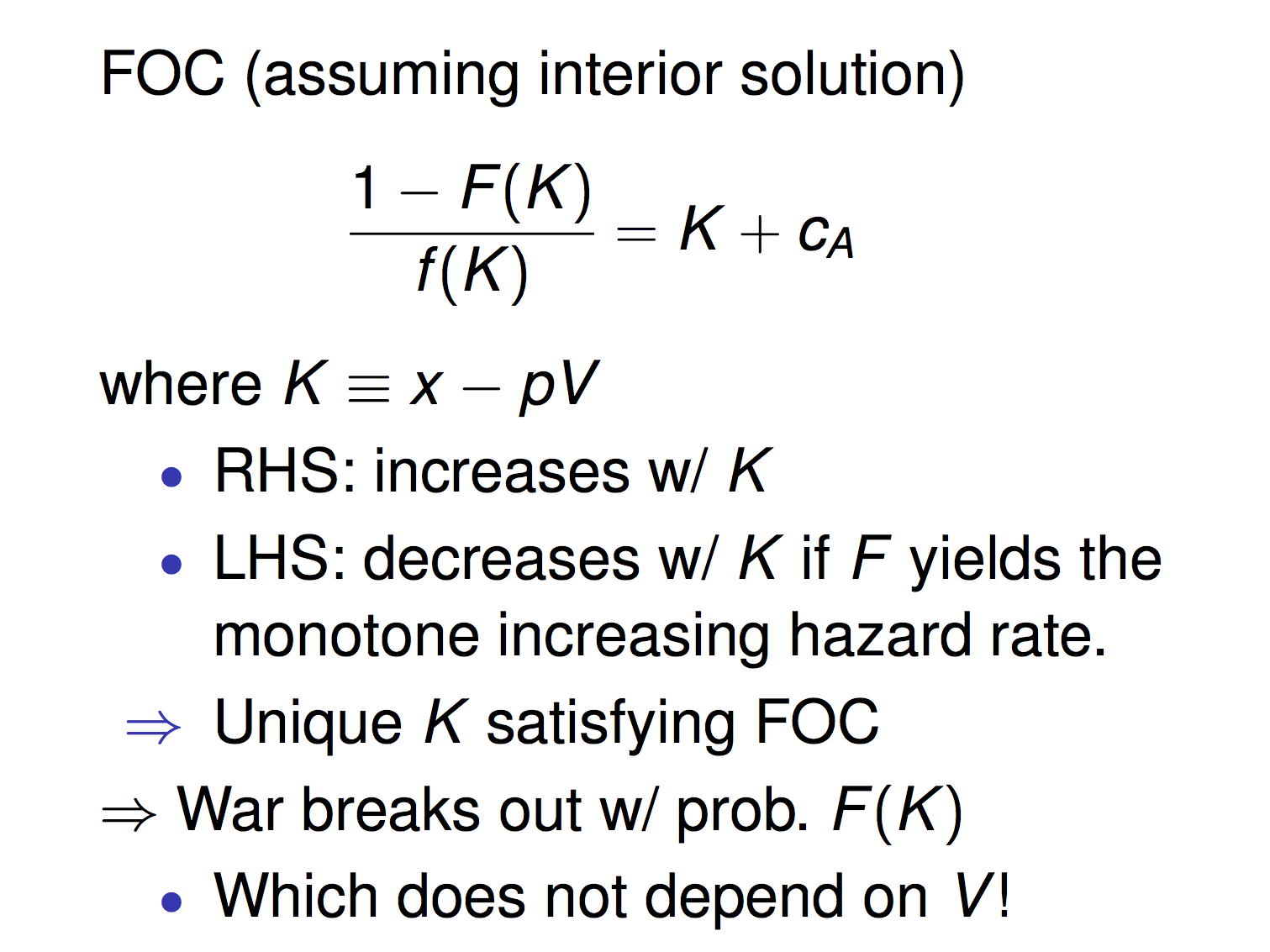
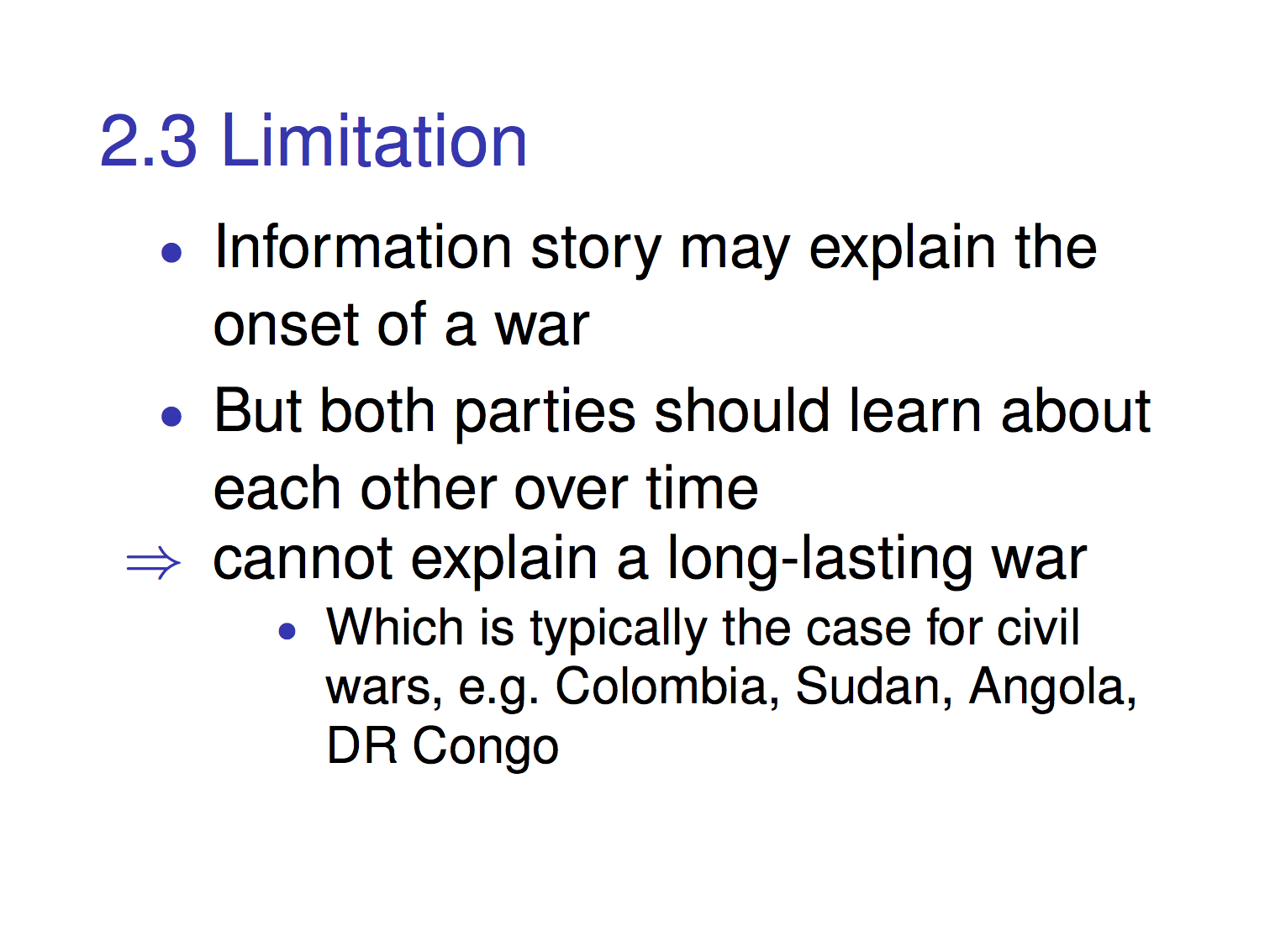
Limitation
Lack of Commitment
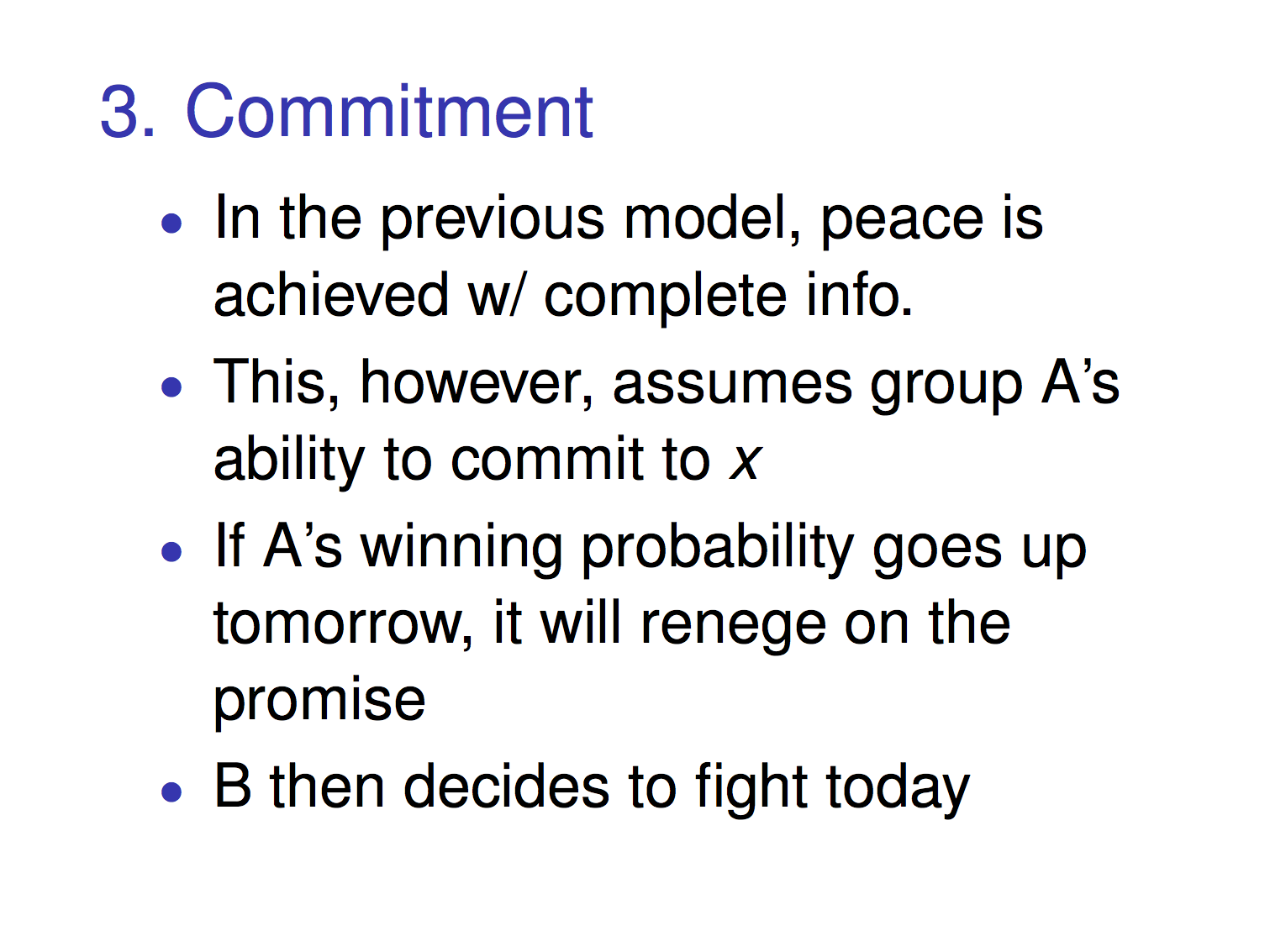
Basic idea
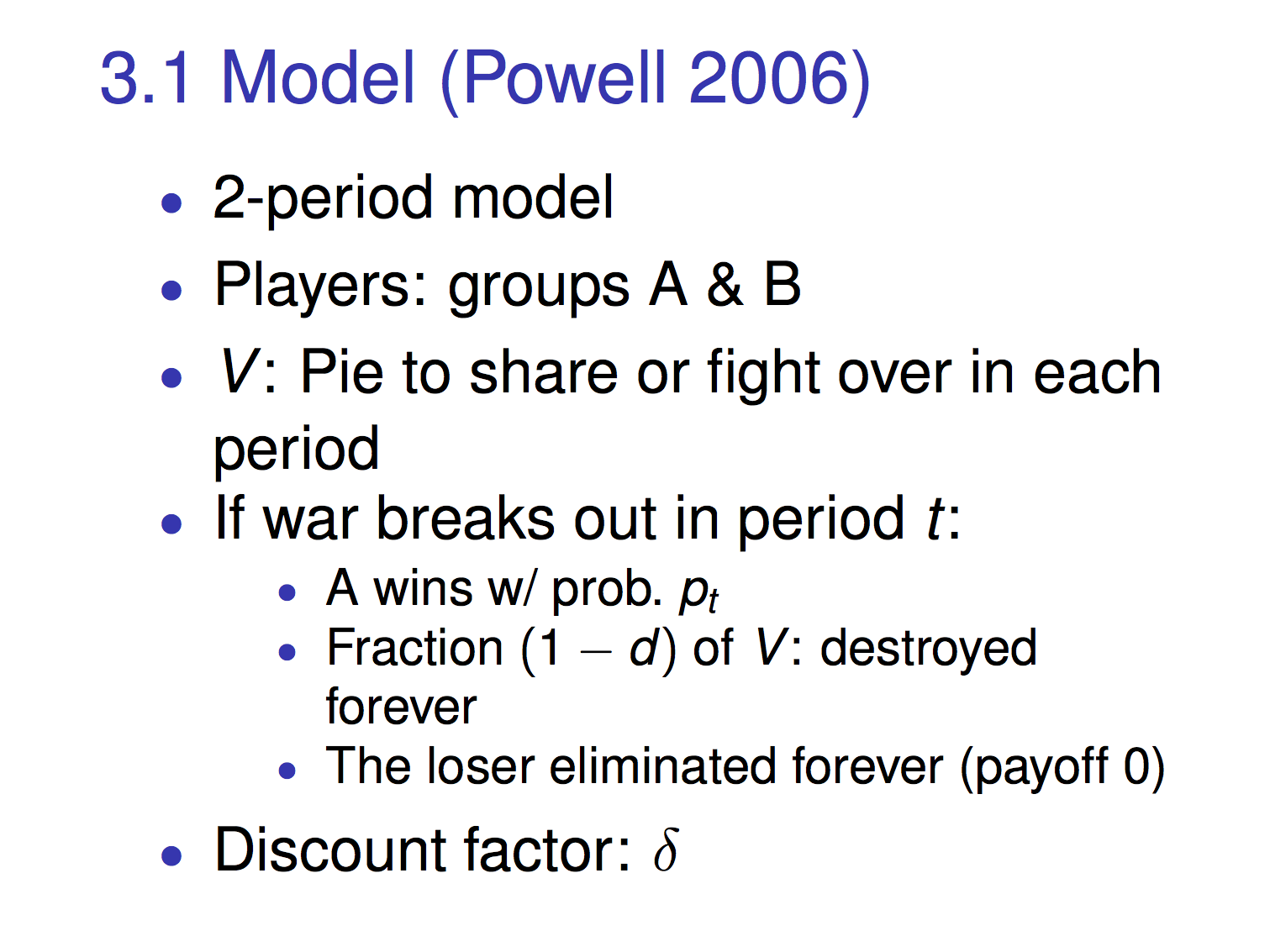
Model (1 out of 2)
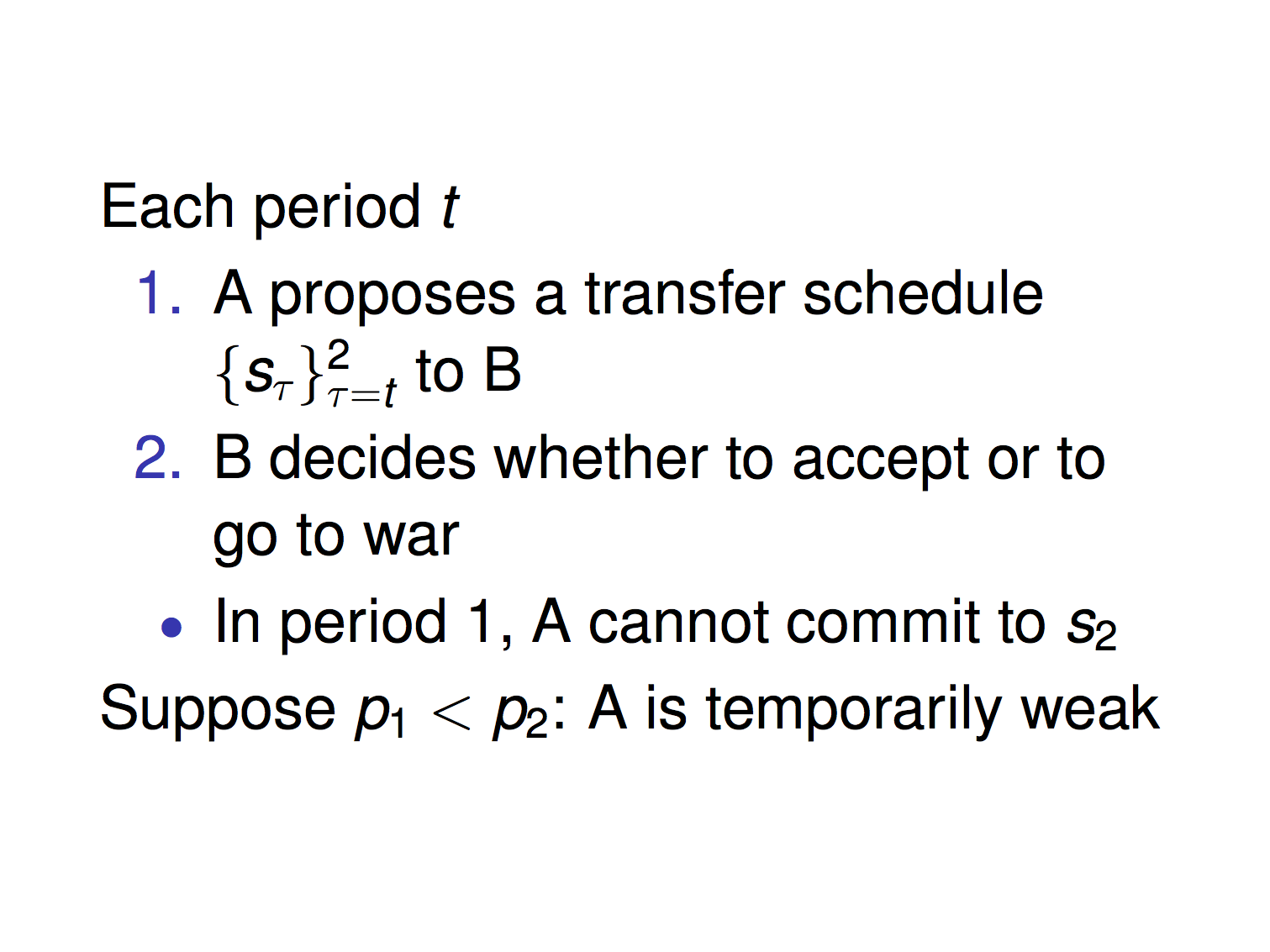
Model (2 out of 2)
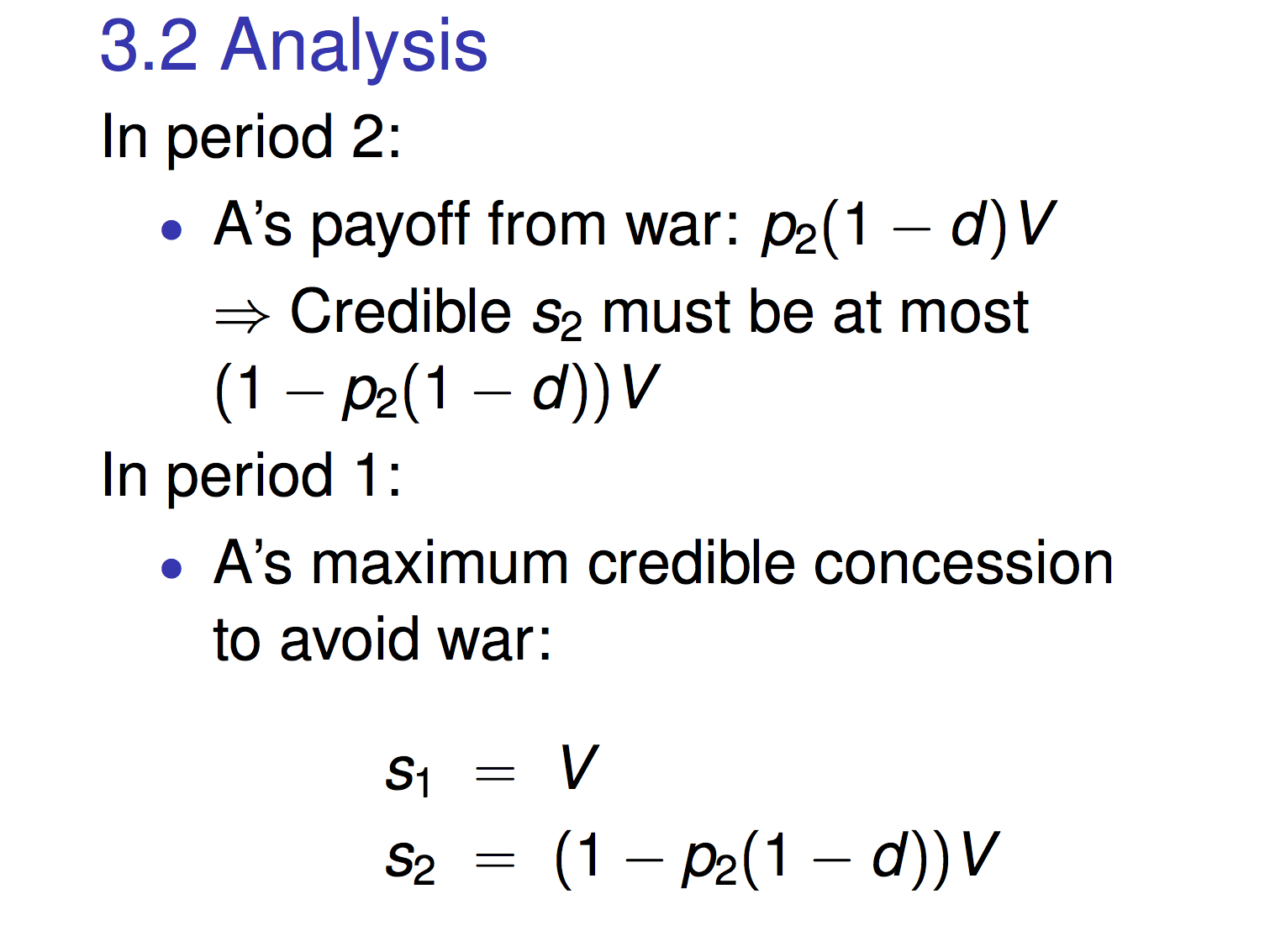
Analysis (1 of 2)
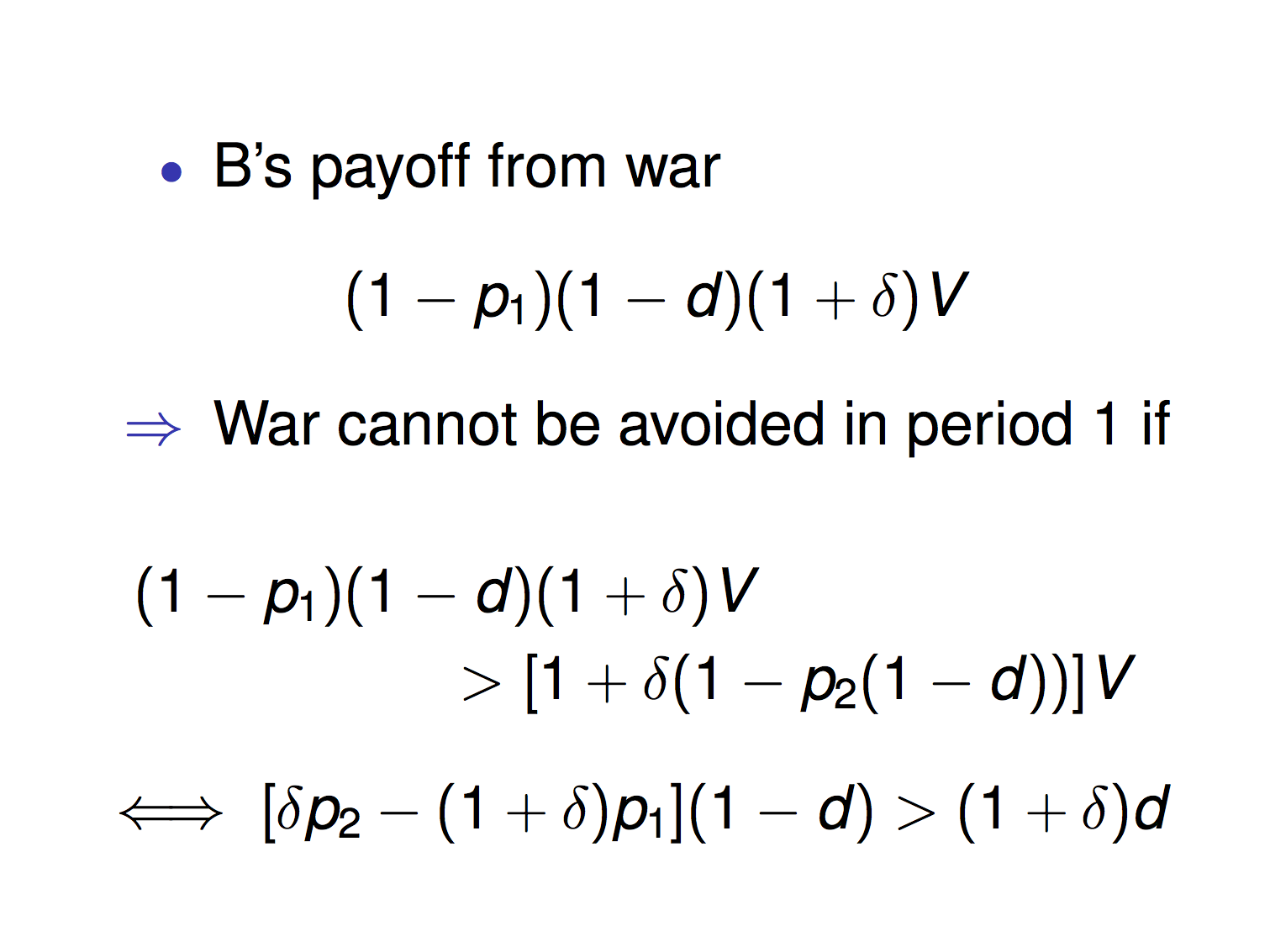
Analysis (2 of 2)

Intuition
An application of the commitment model
A theory of regime changes between autocracy and democracy
Democracy is a commitment device for the rich
to transfer to the poor in the future
Other reasons for conflict
Reason #4
Political leaders do not internalize the cost of war
Jackson and Morelli (2007 AER) for theory
McGuirk et al. (2017) for evidence
US legislators with drought-age sons
support pro-conscription bills
more likely than those with drought-age daughters
Jones and Olken (2009) for related evidence
Successful assassination of national leaders
leads to the end of a war more likely than failed attempts
Reason #4 (cont.)
Related evidence on the role of political leaders
Successful assassination of national leaders
leads to the end of a war more likely than failed attempts
Queens, especially married queens, staged a war
more likely than kings
Reason #5
Grievance
The revolt against the Qing dynasty in early 20th century
mostly took place in prefectures
where many could have become a bureaucrat by passing the civil service exam (abolished in 1905)
Political Economics lecture 6 part A: Models of Conflict
By Masayuki Kudamatsu
Political Economics lecture 6 part A: Models of Conflict
- 2,541



